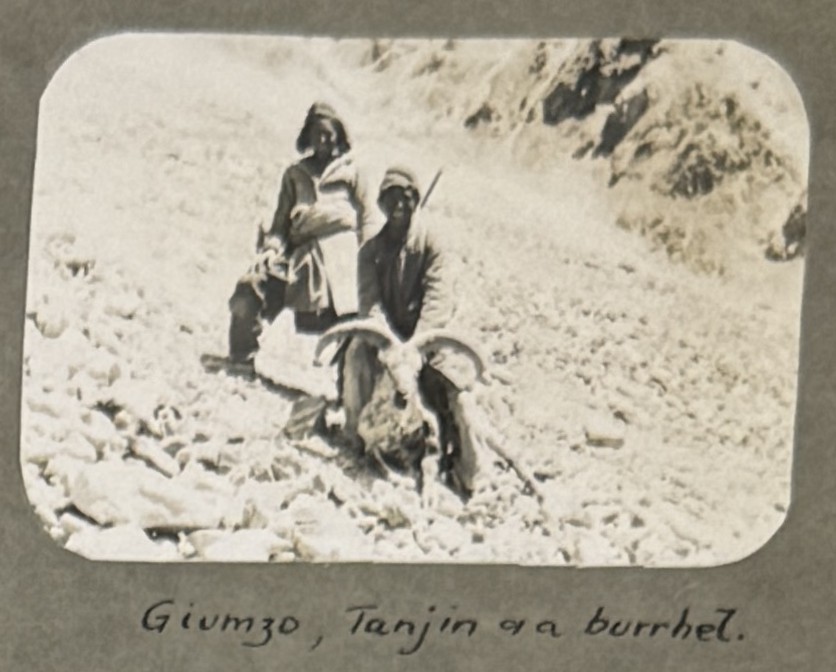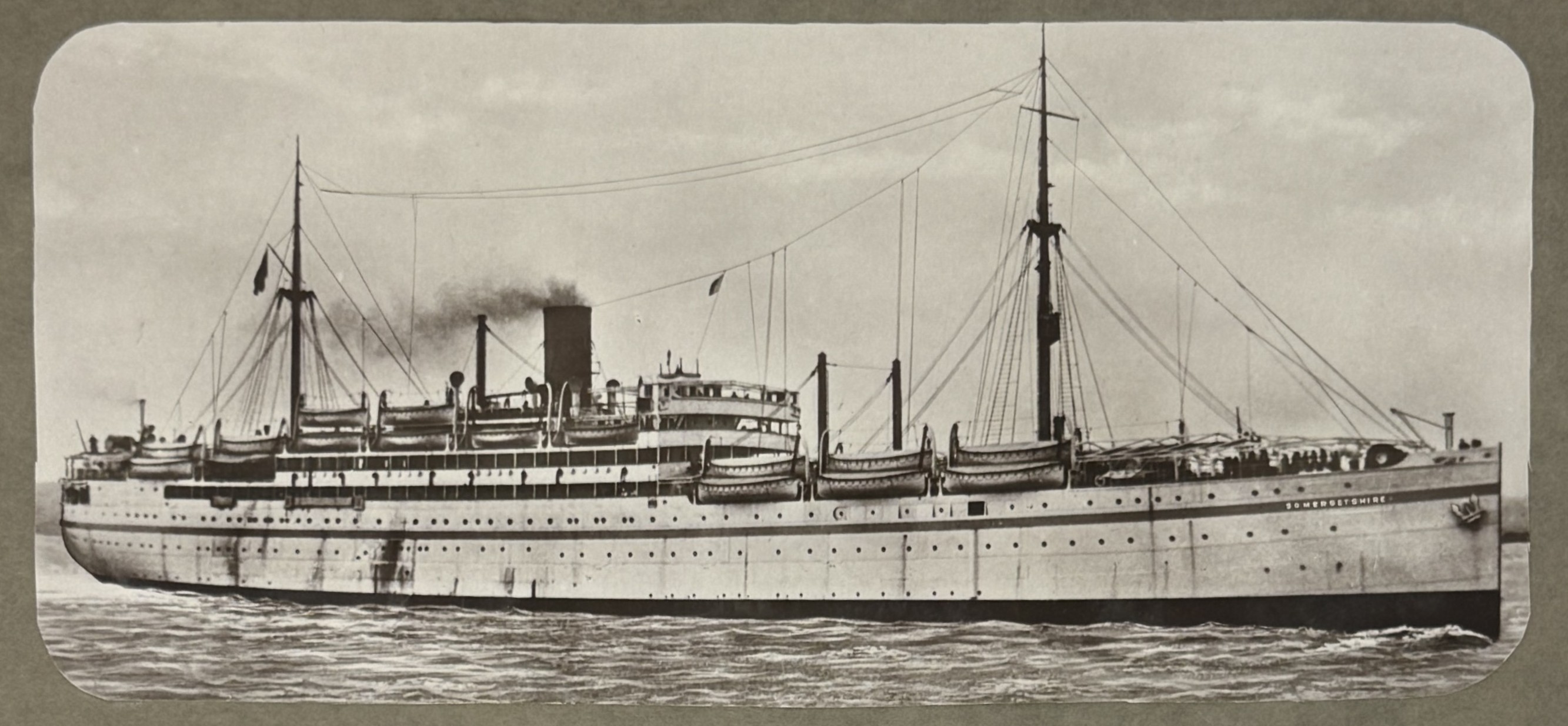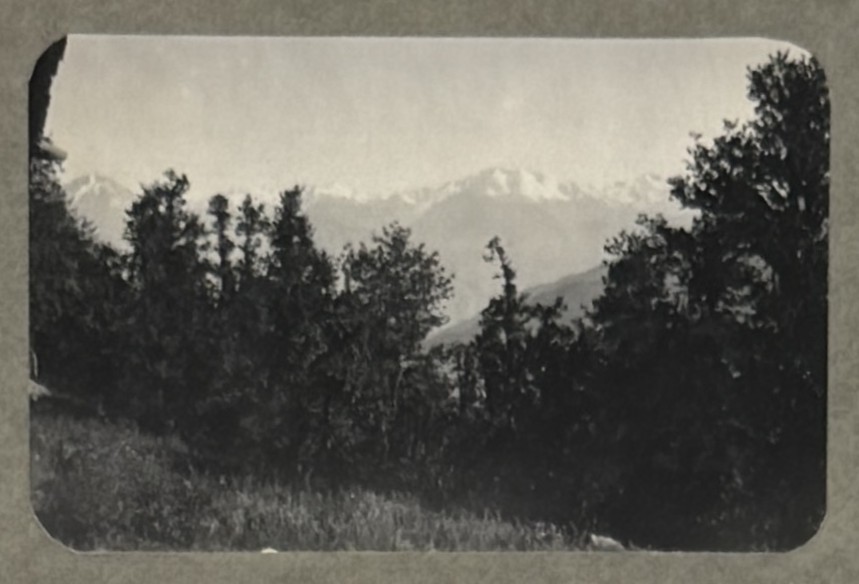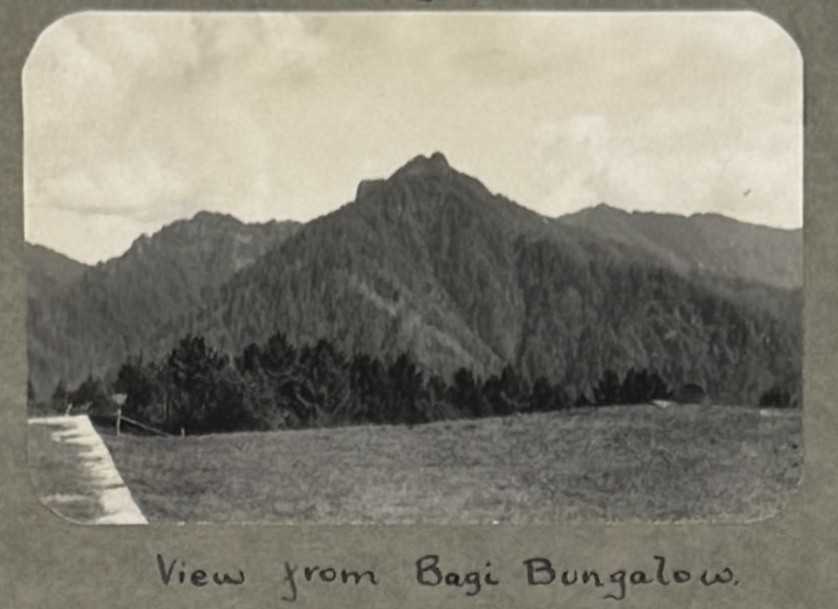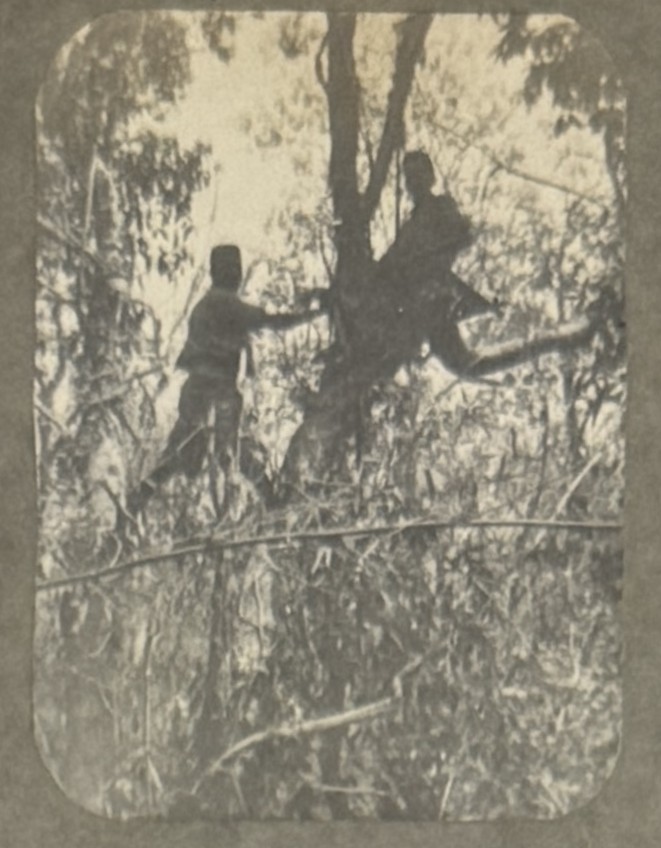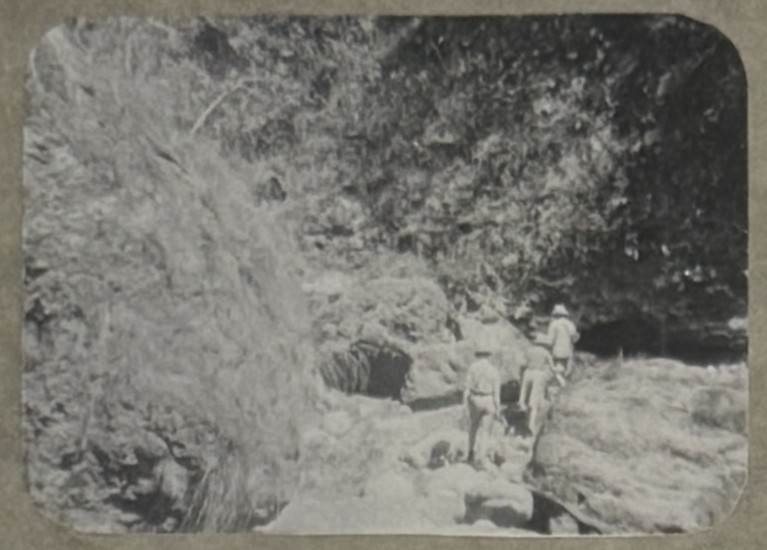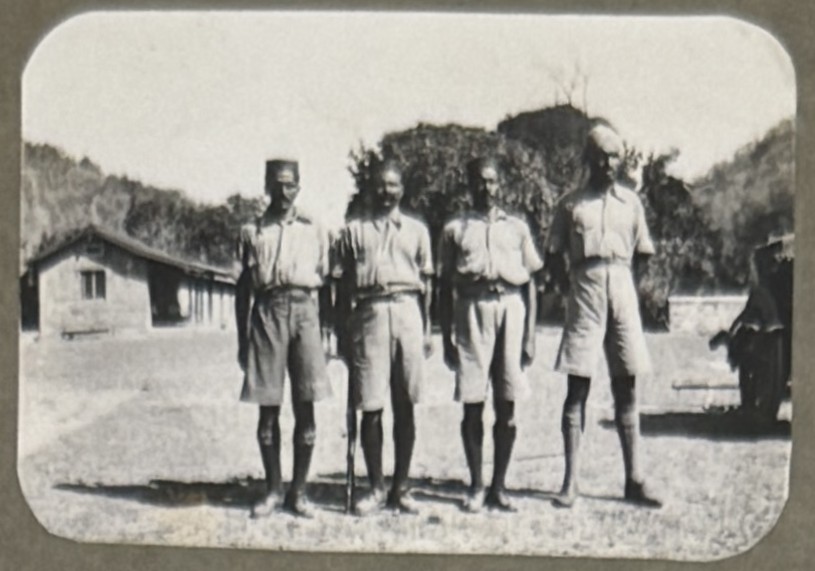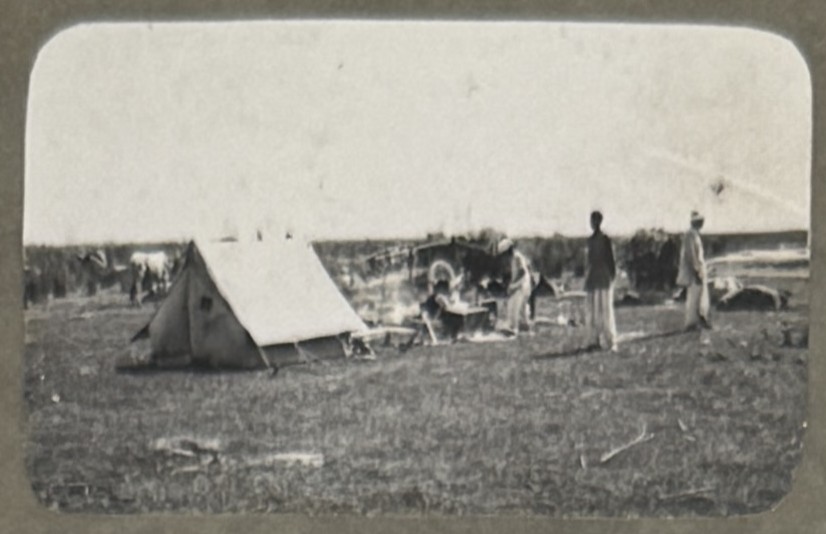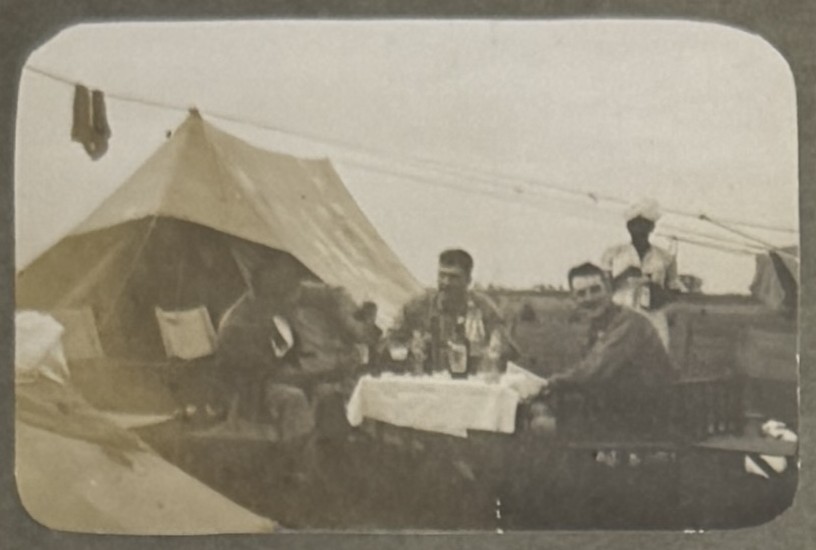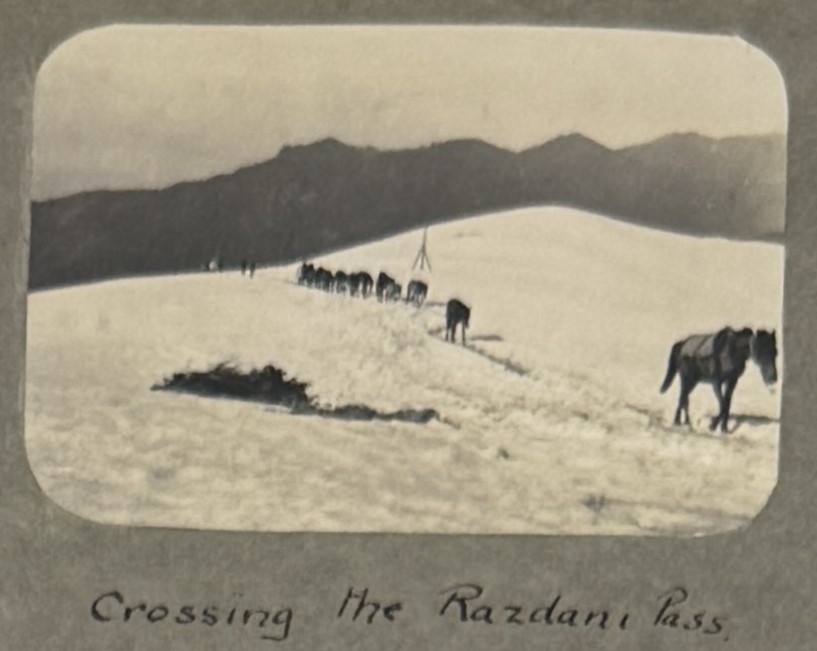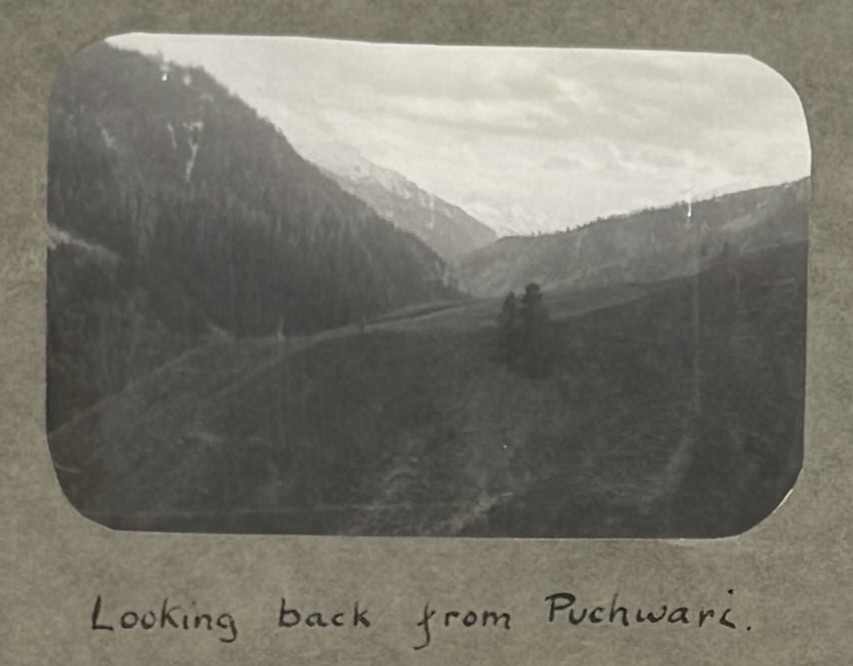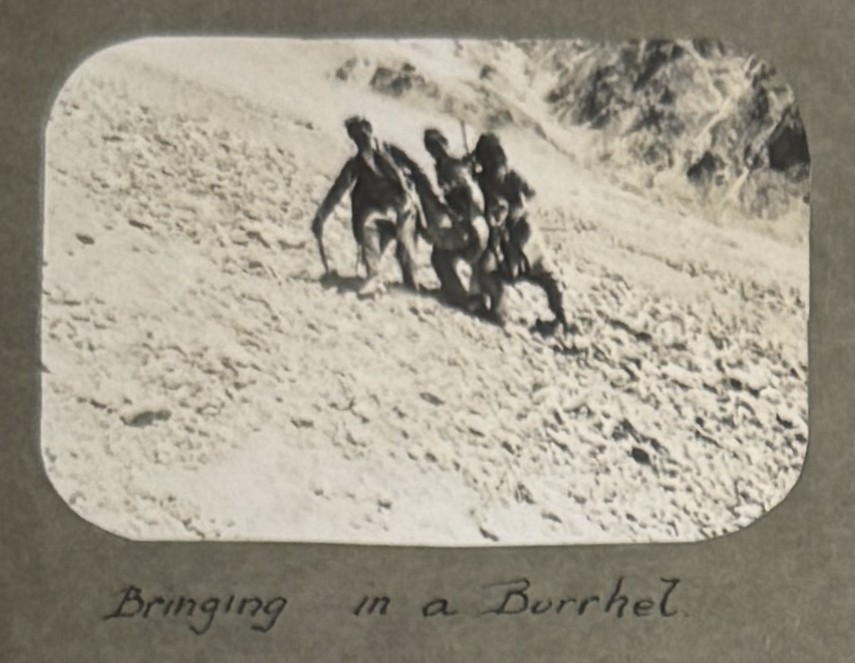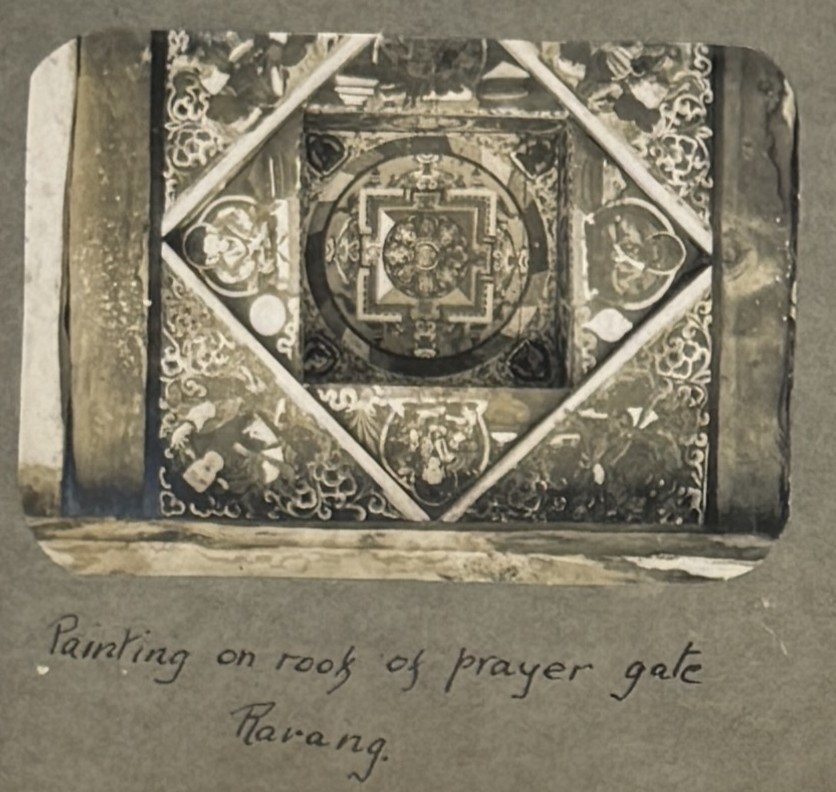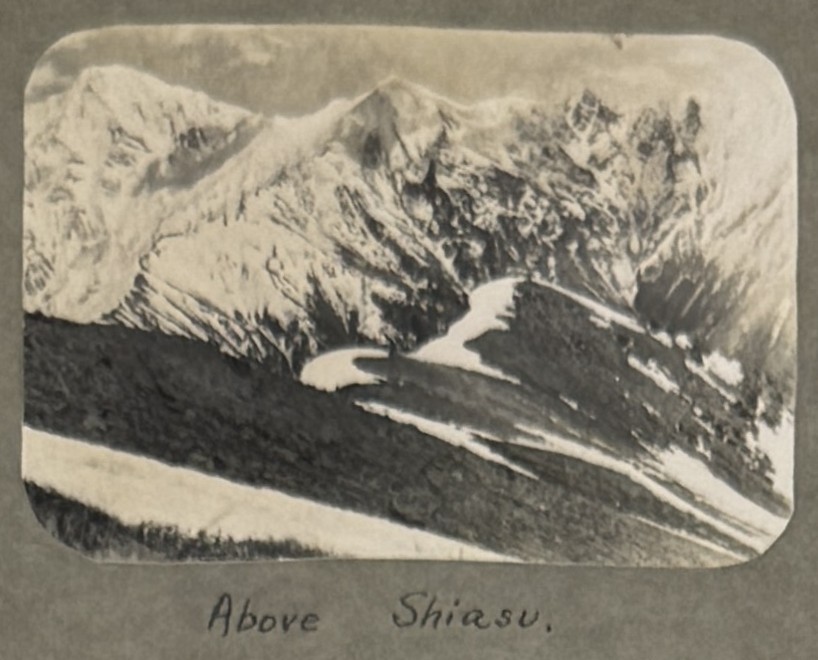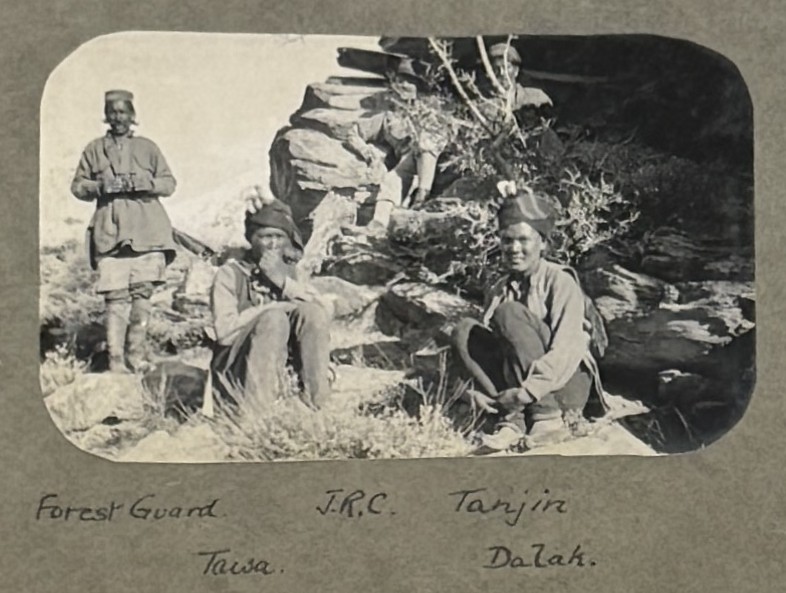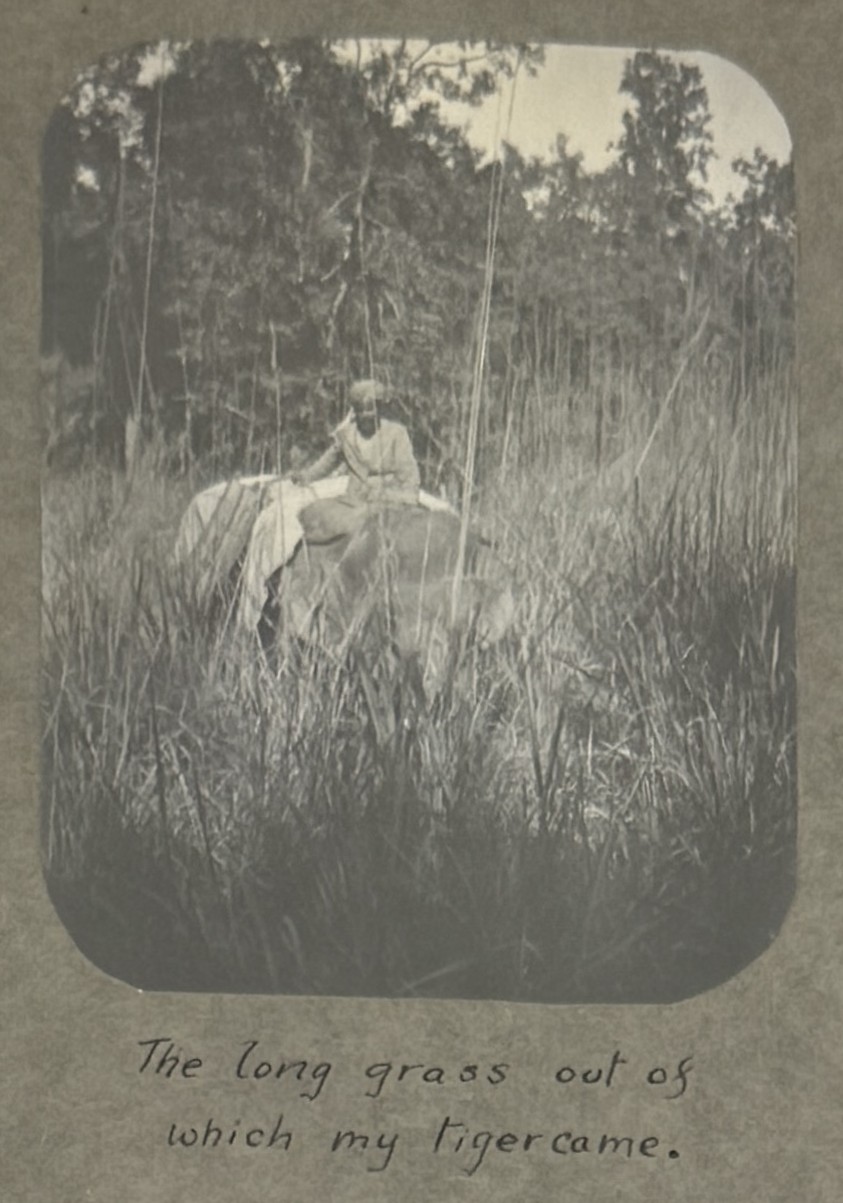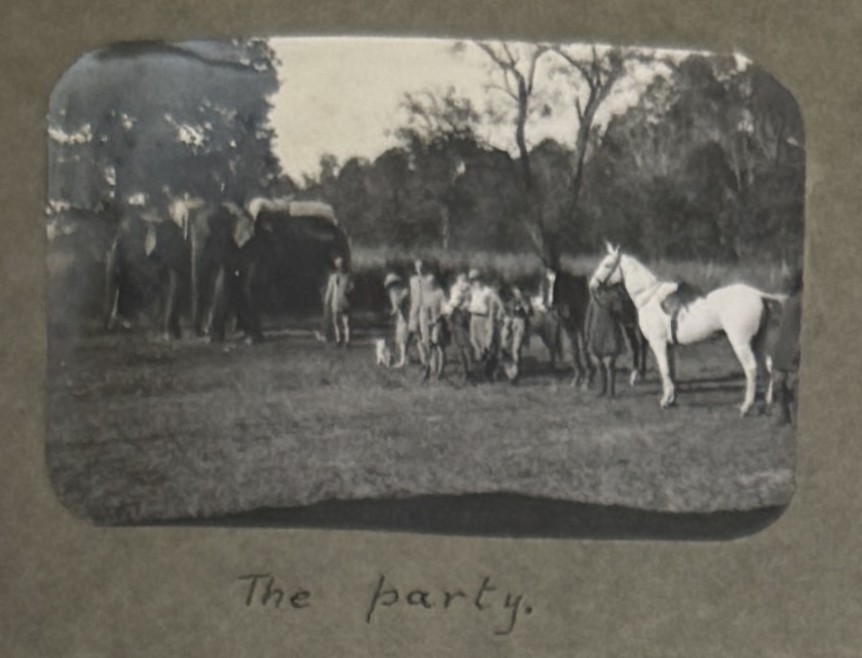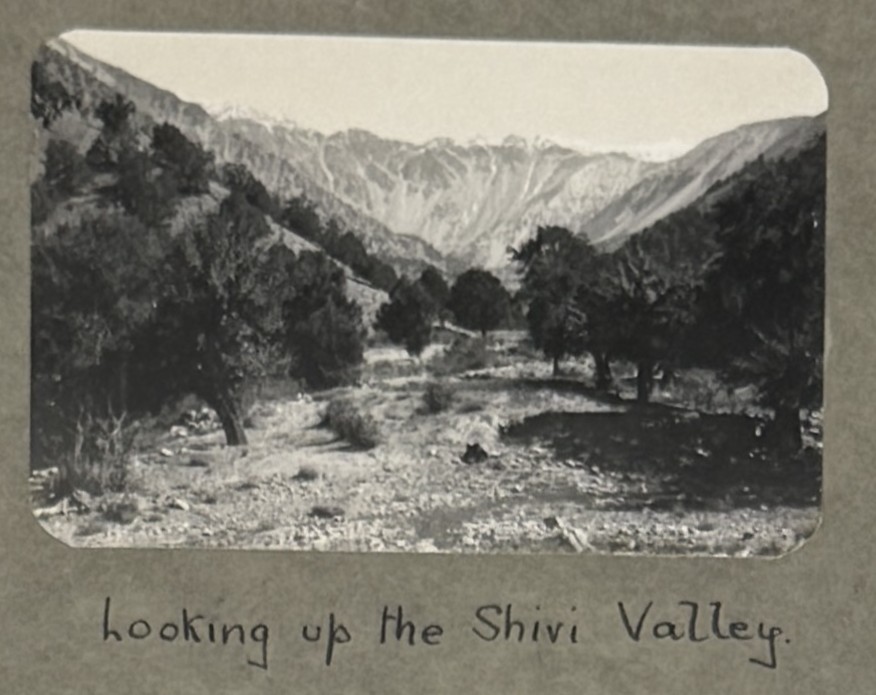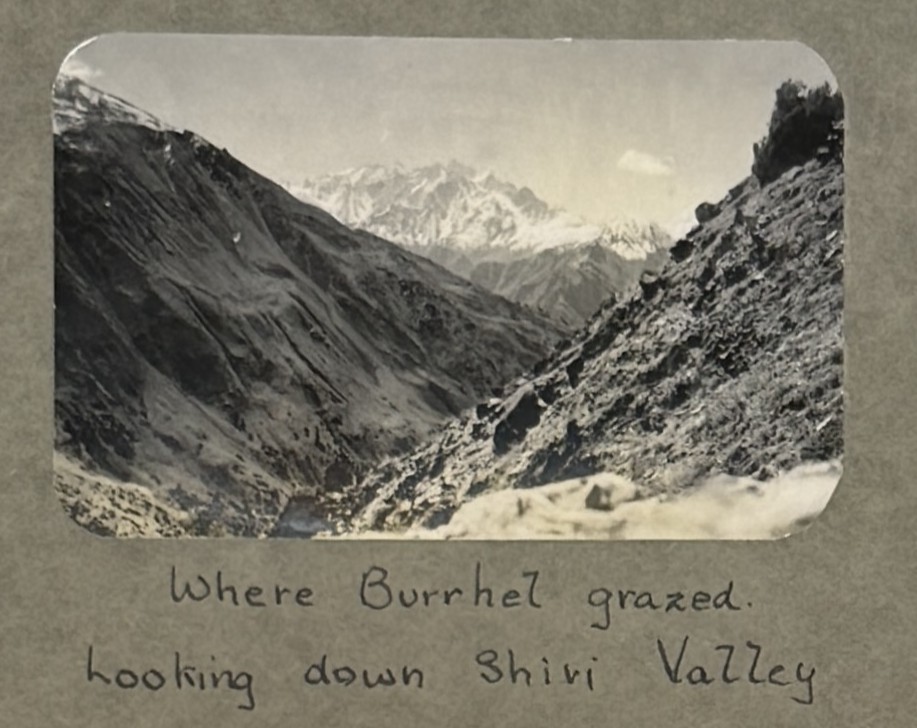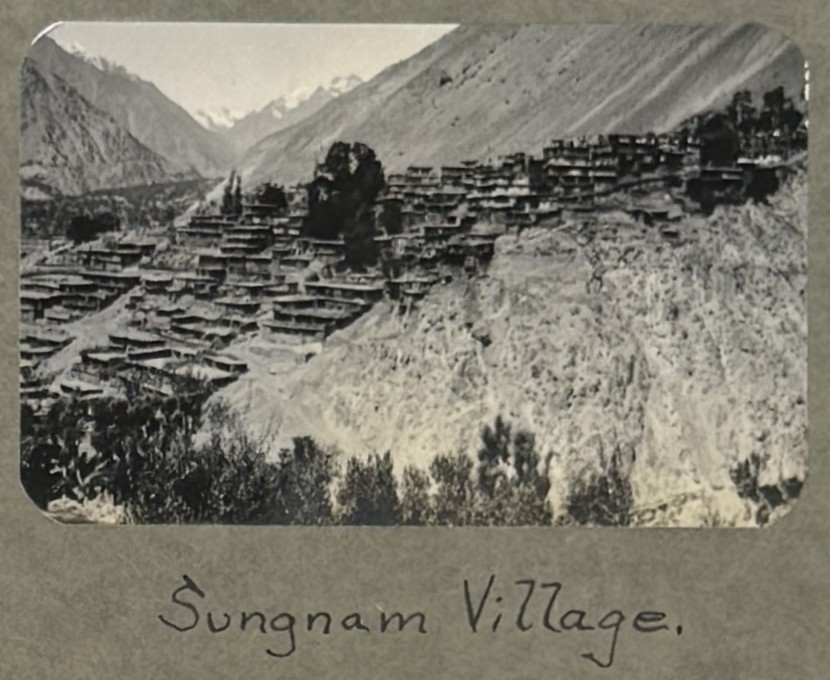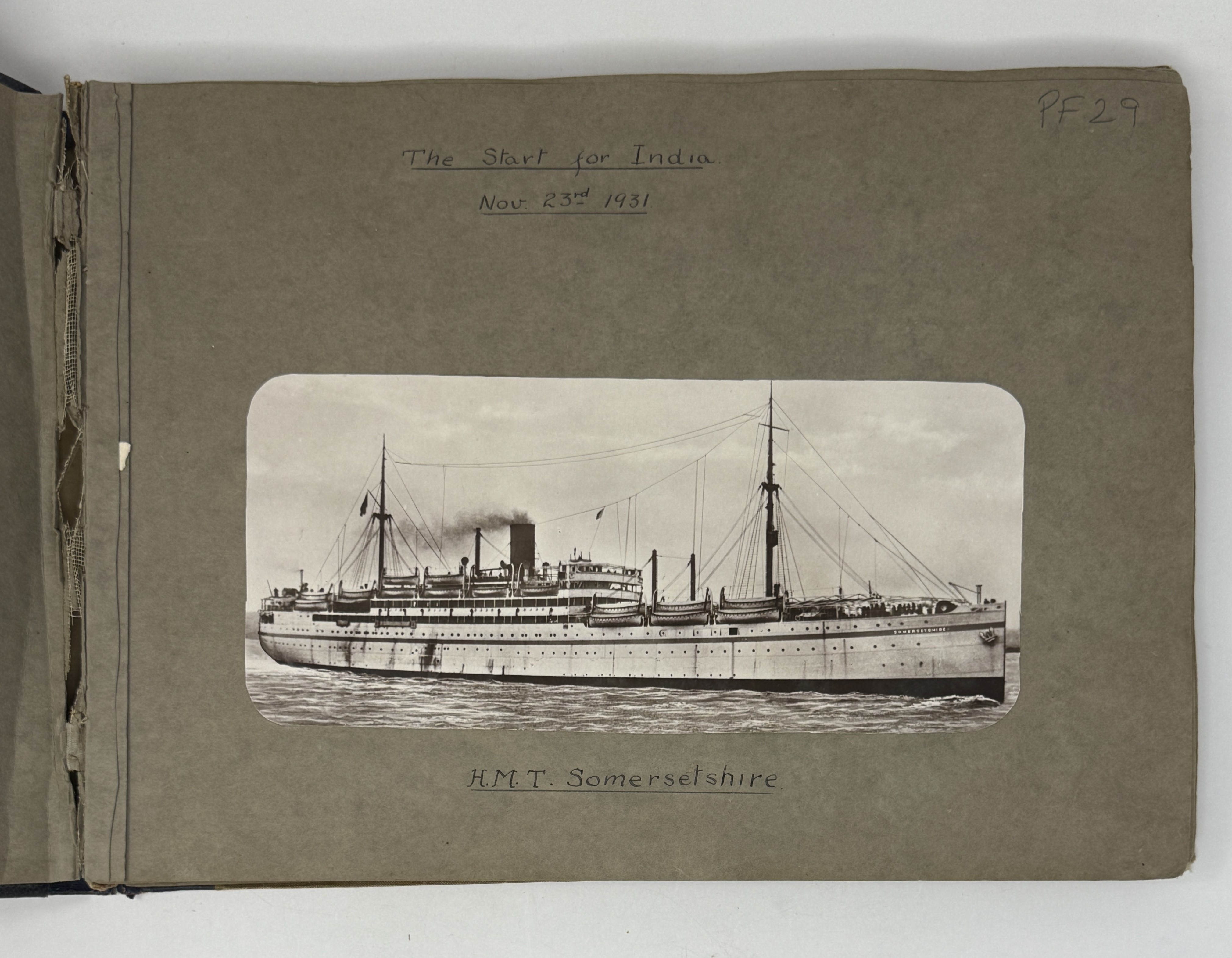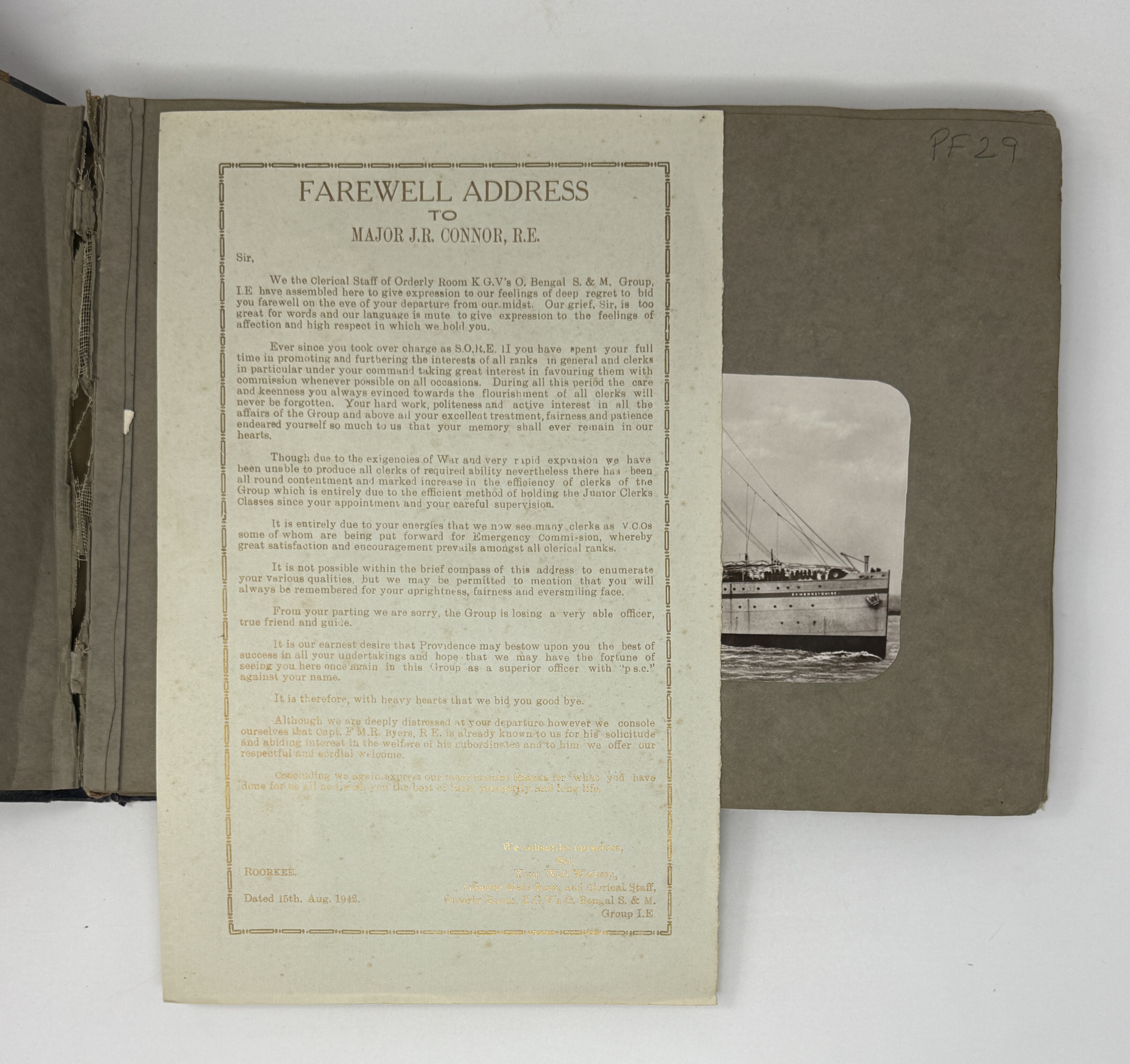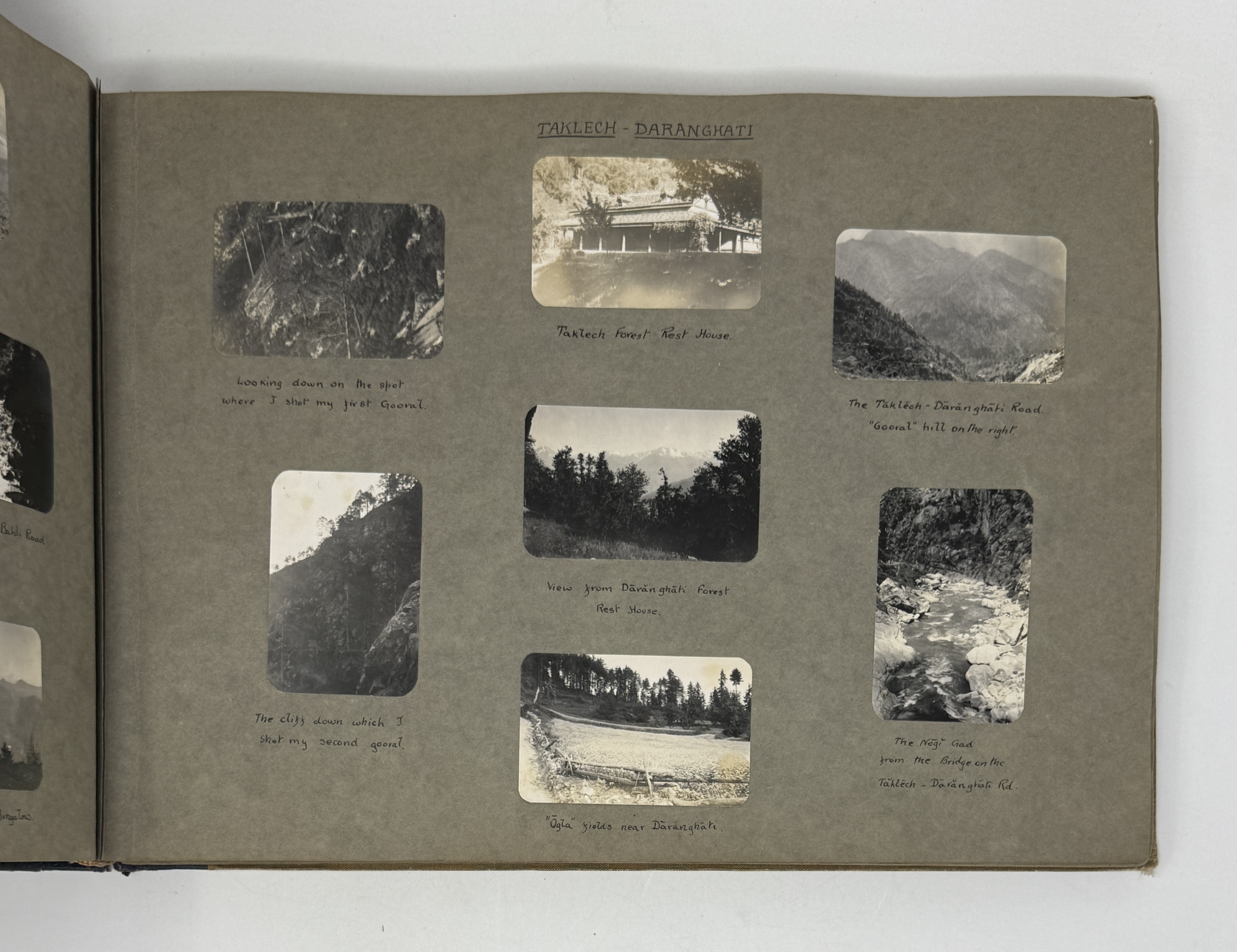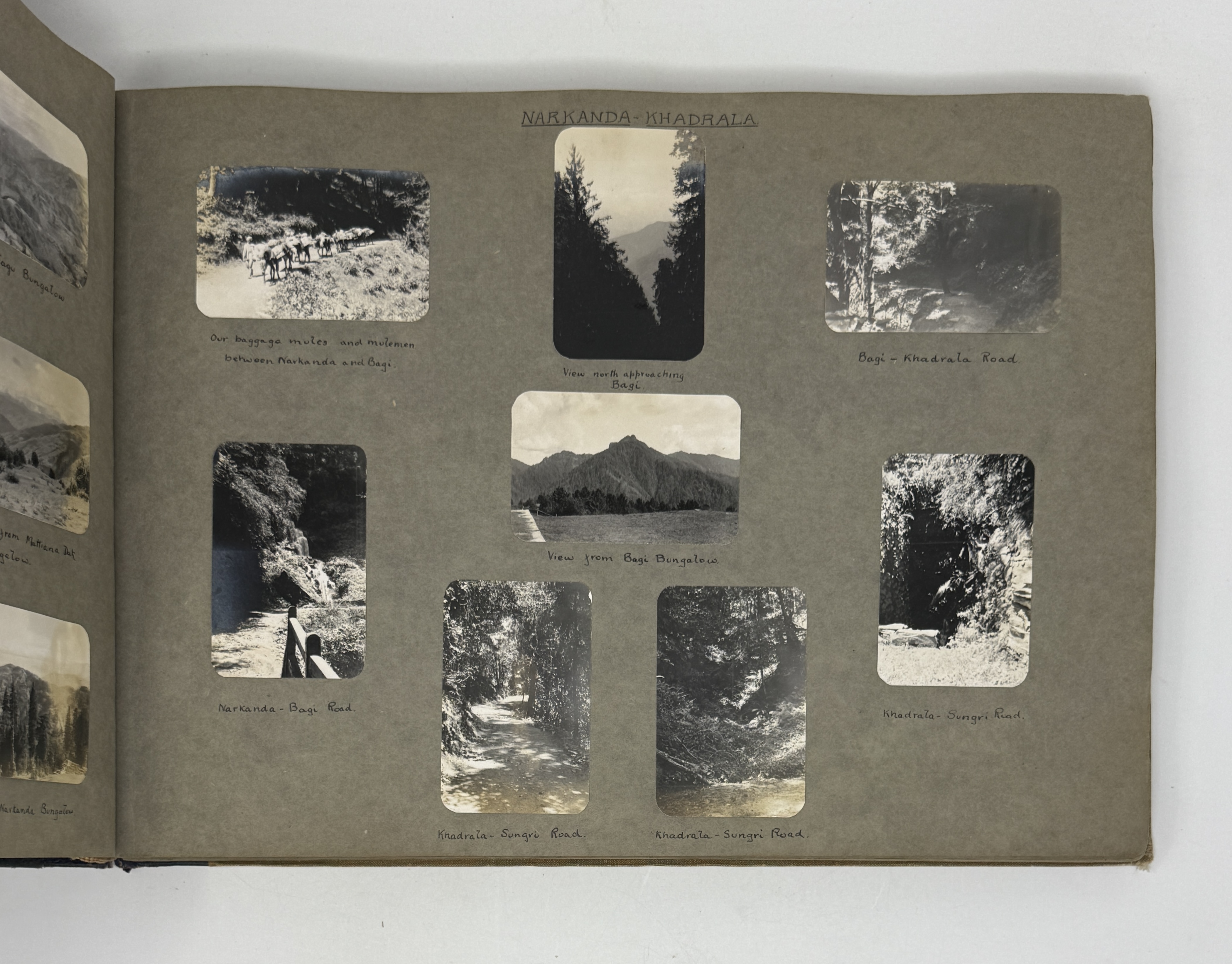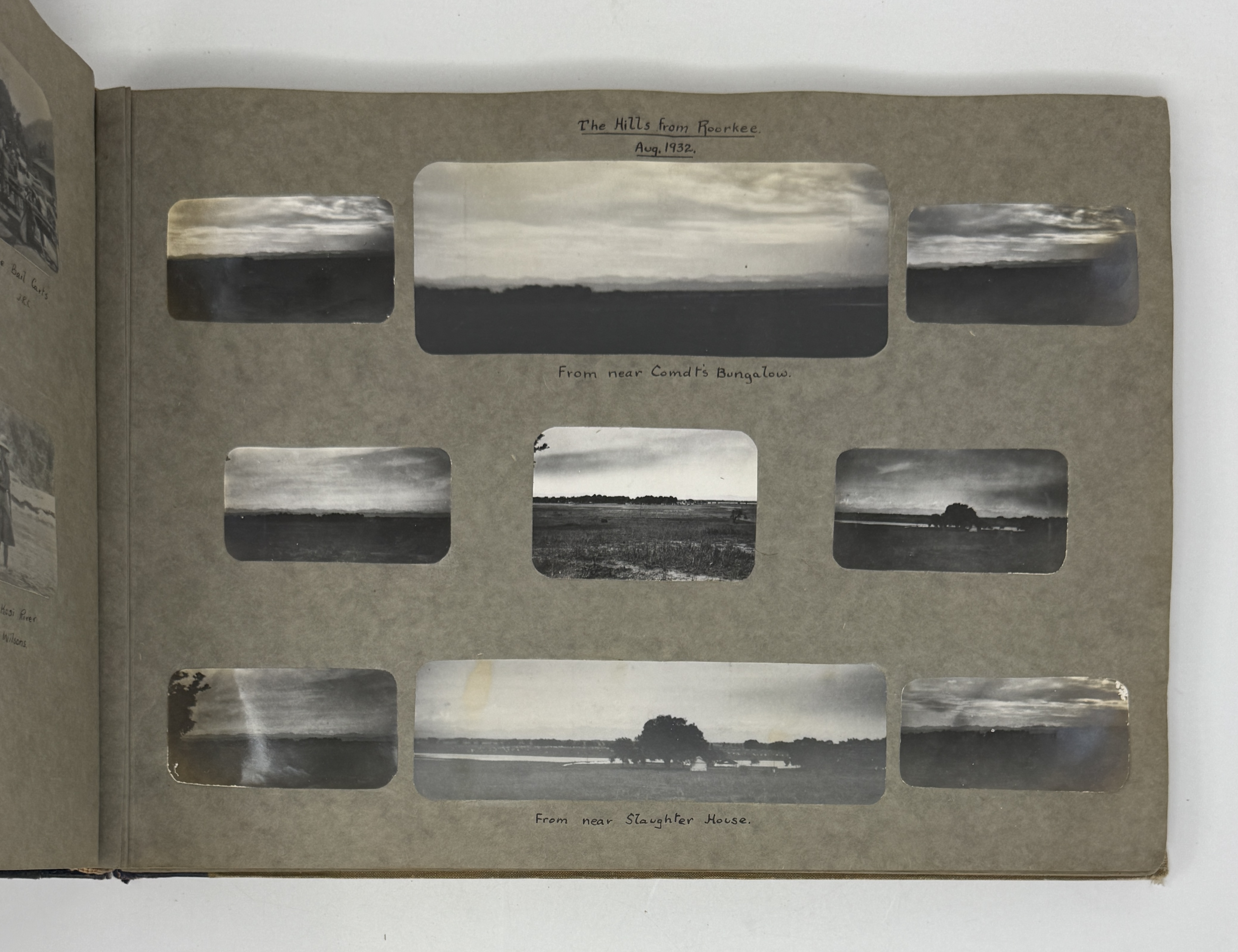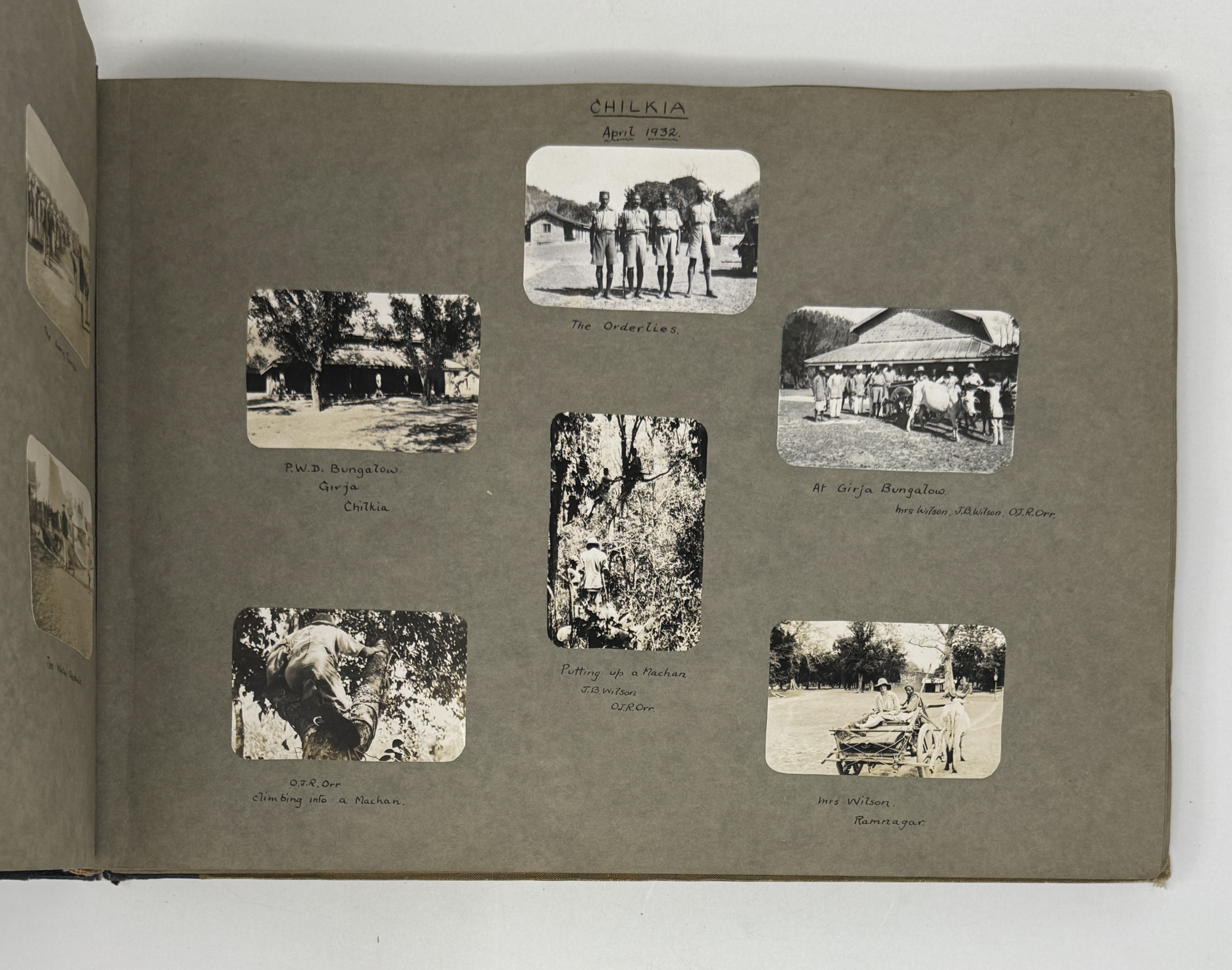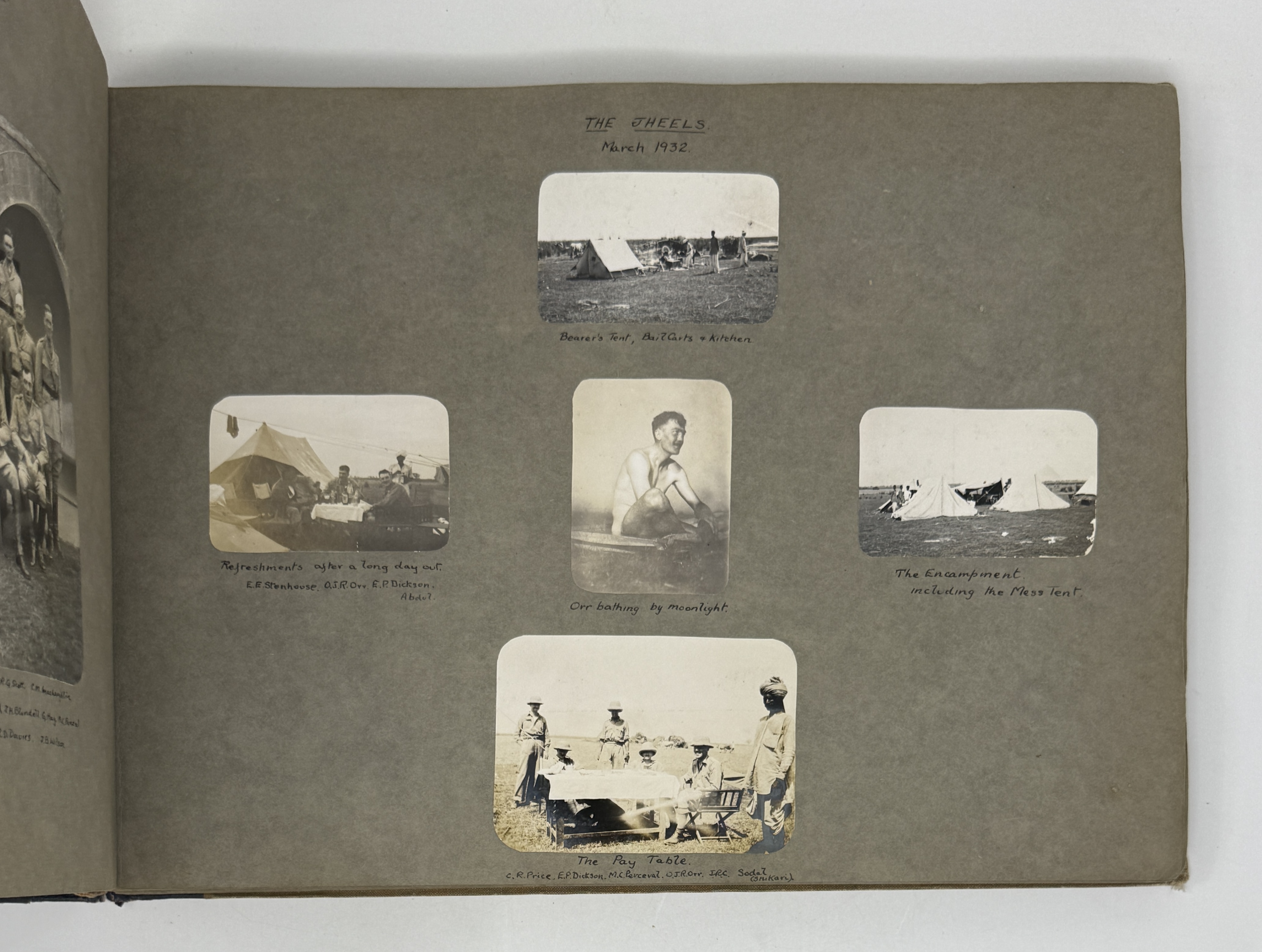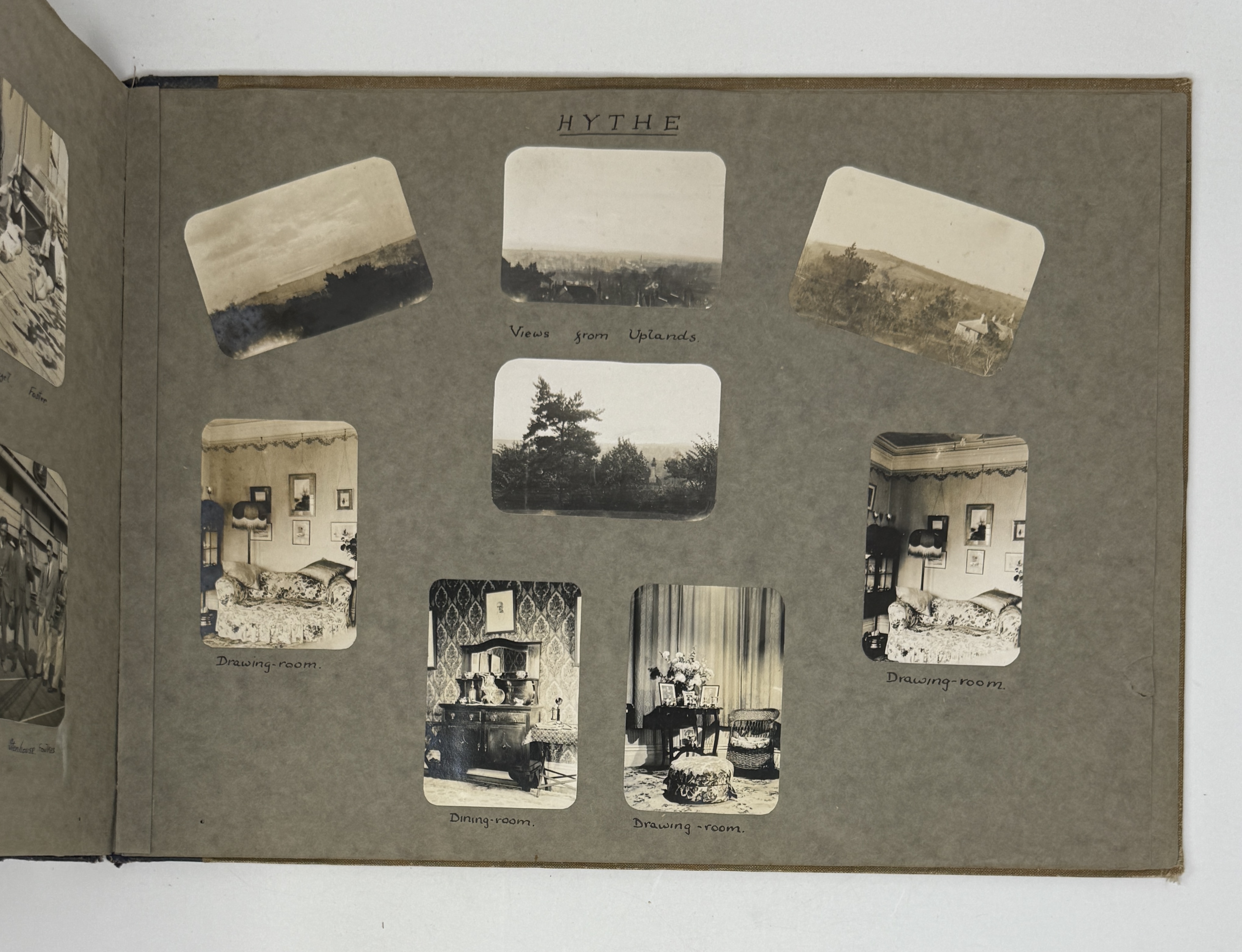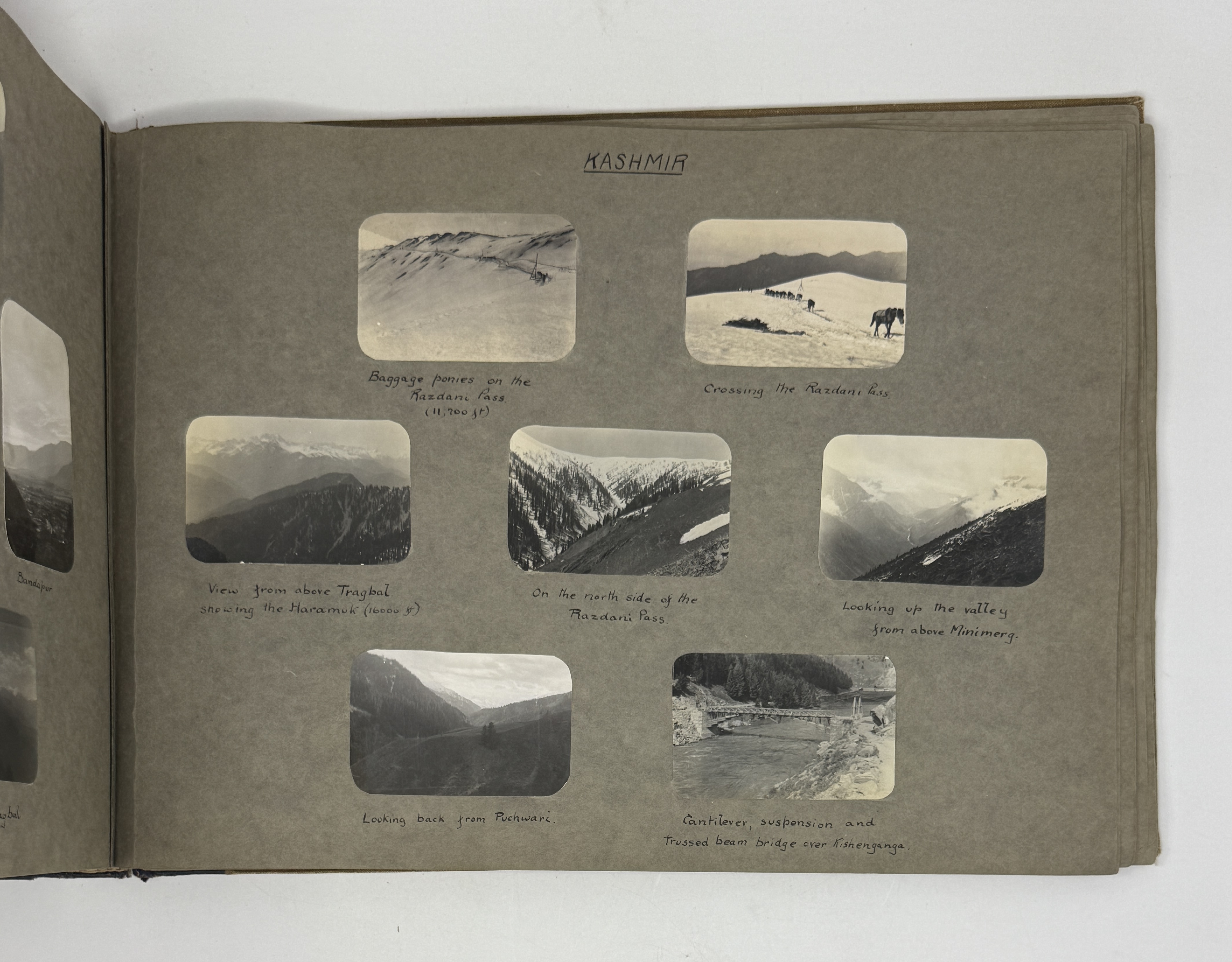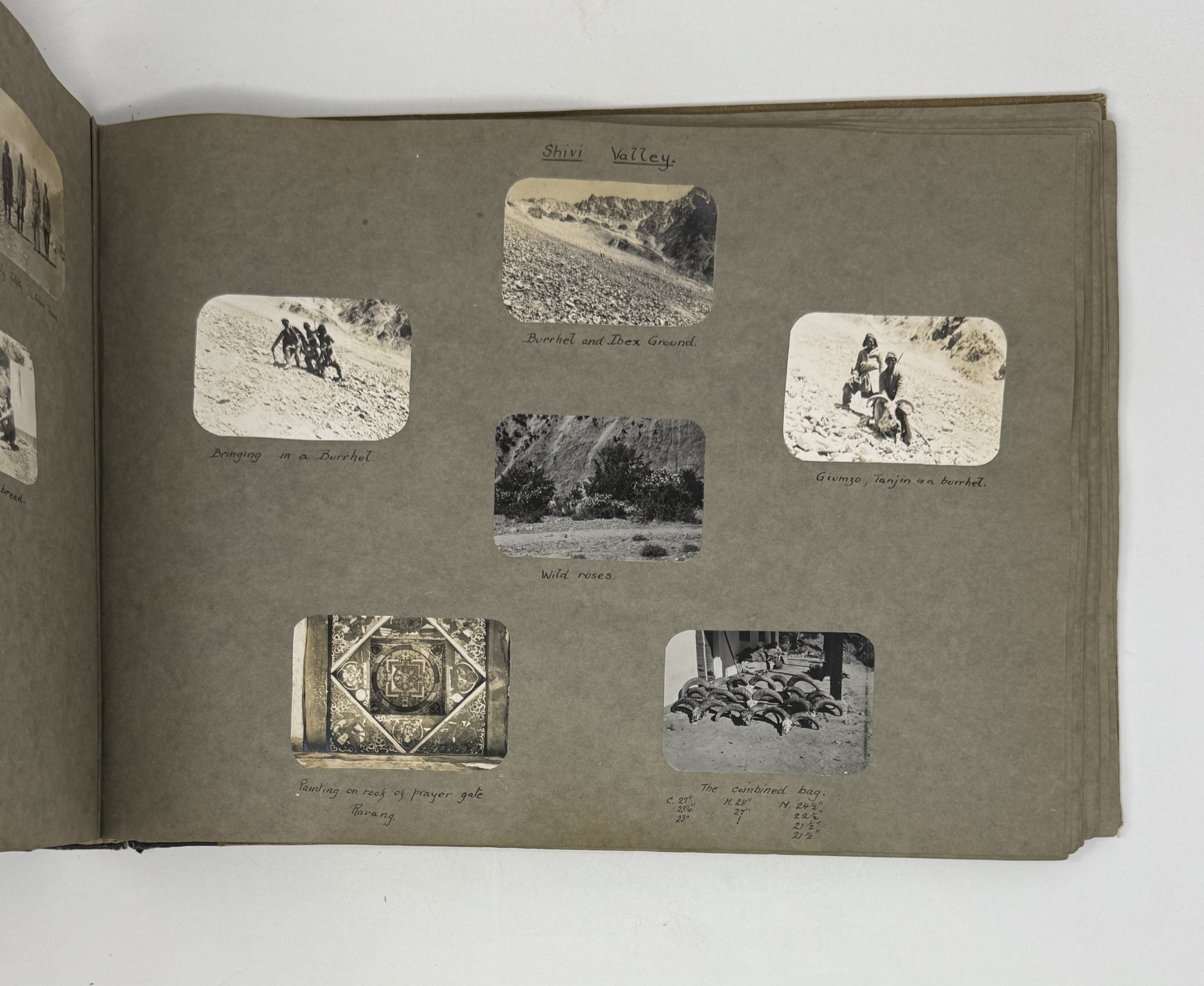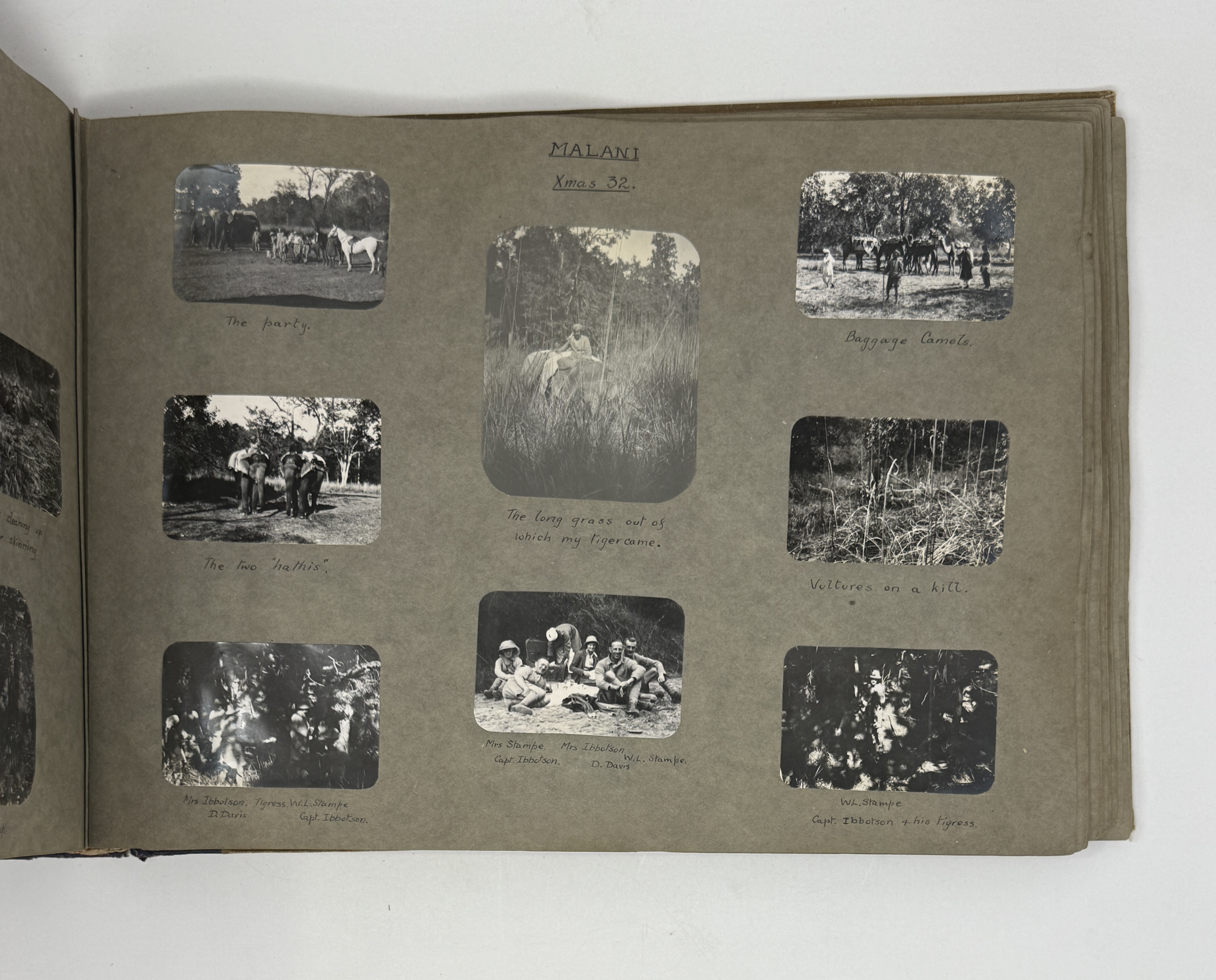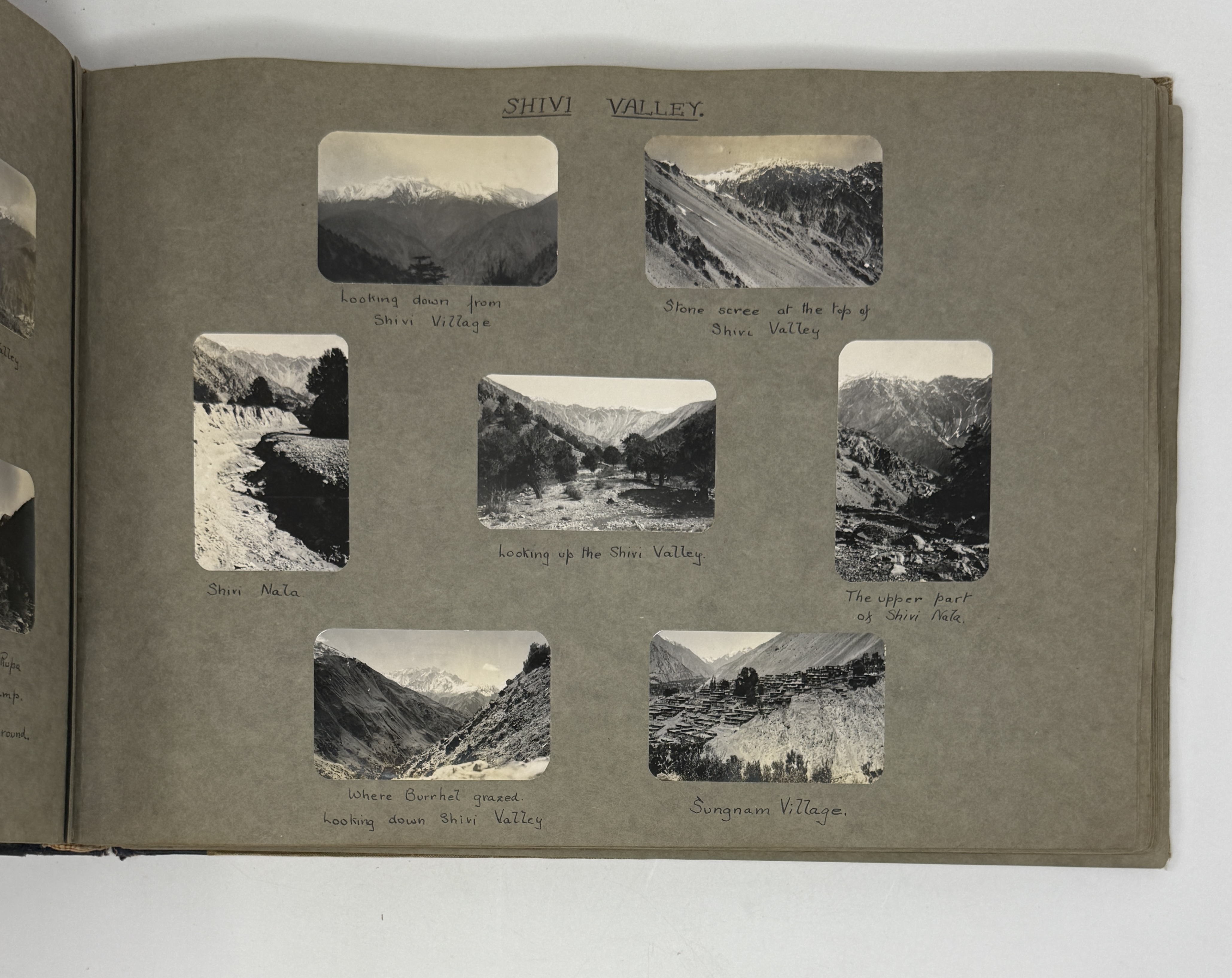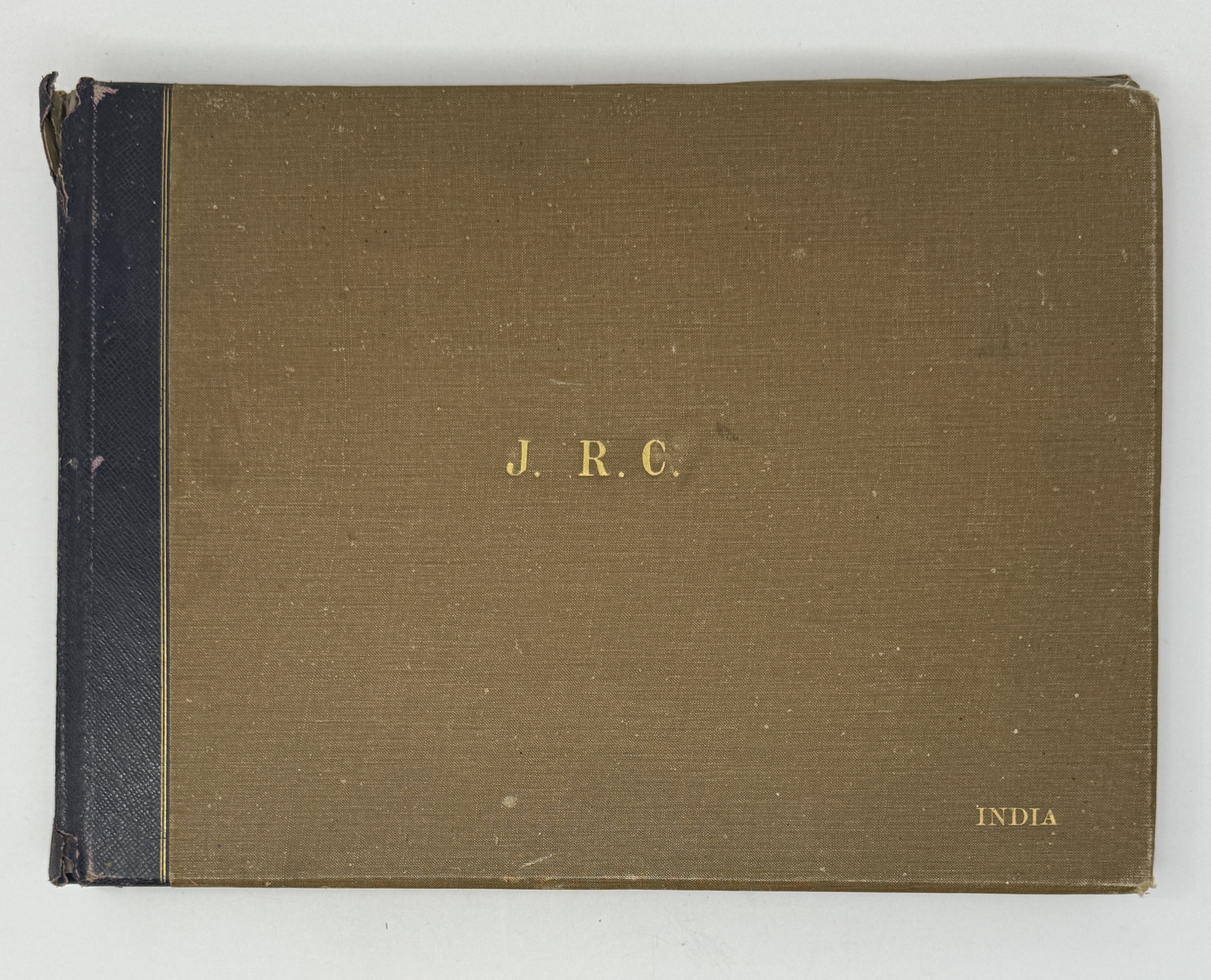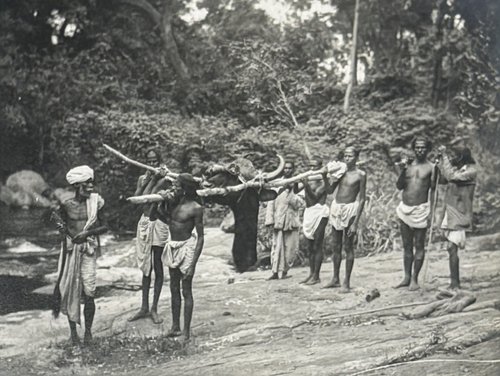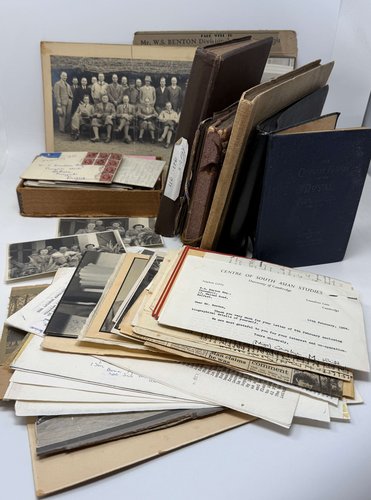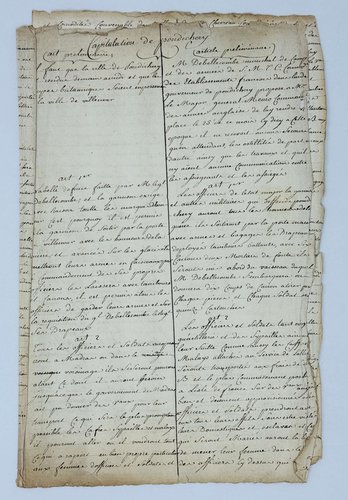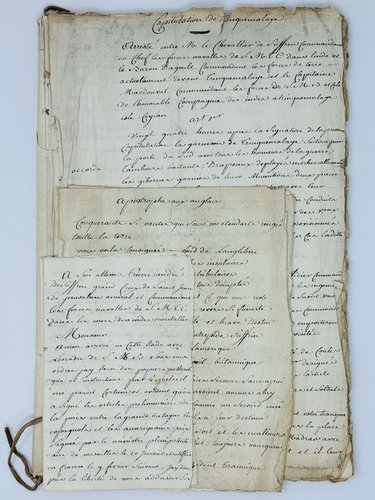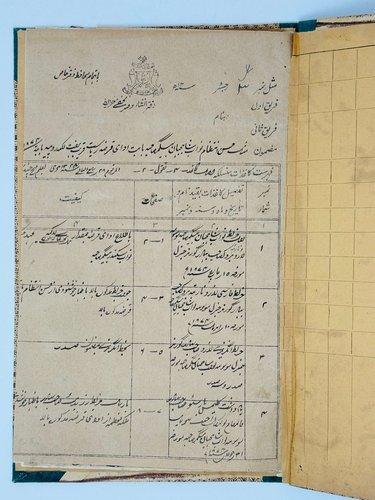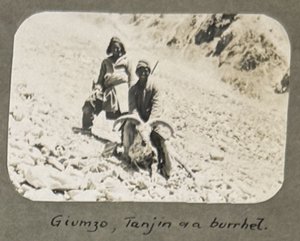
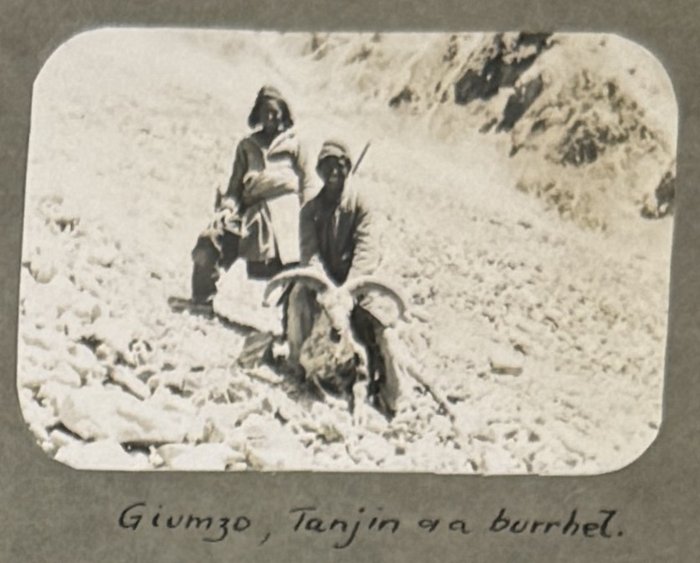
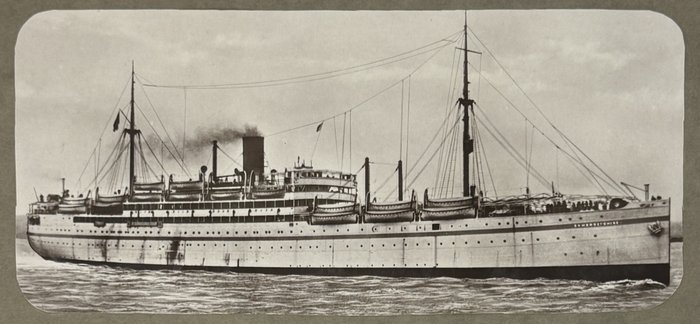
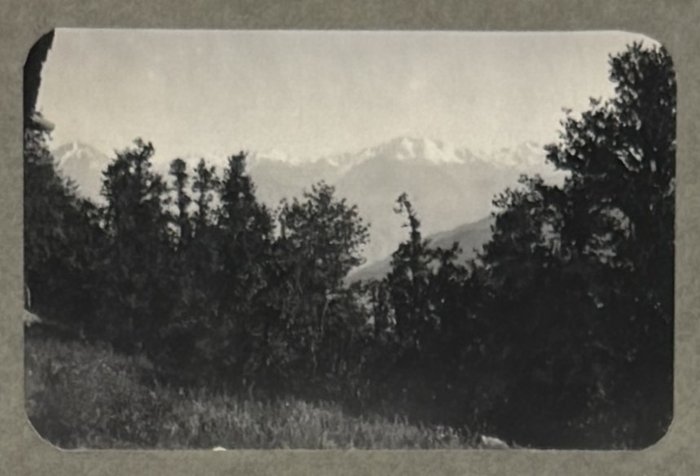
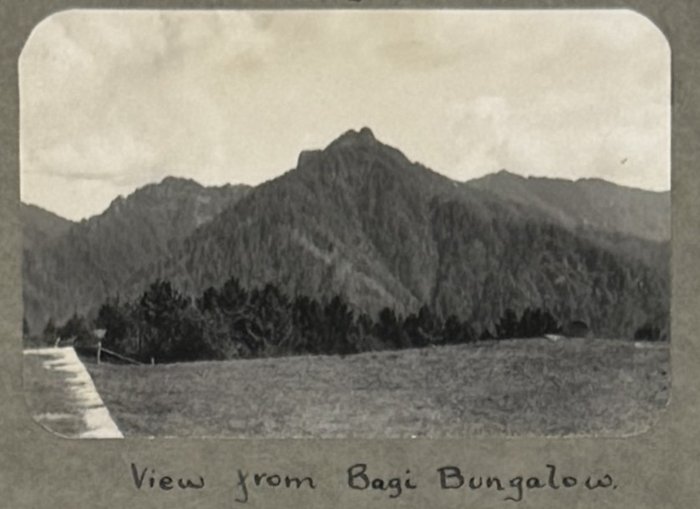
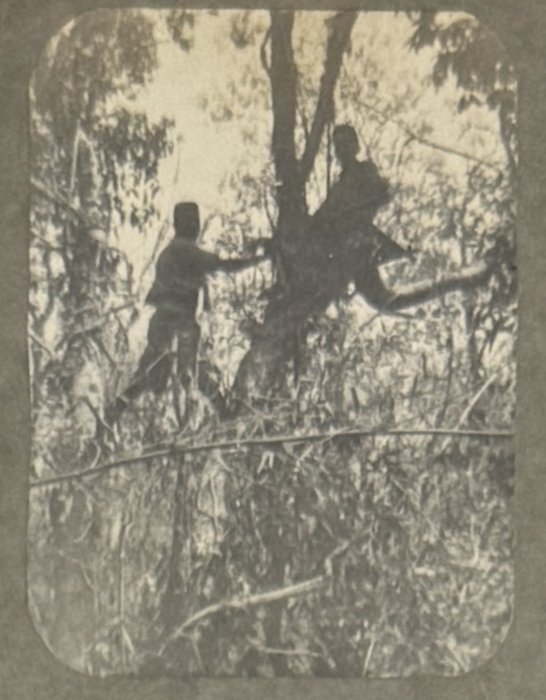
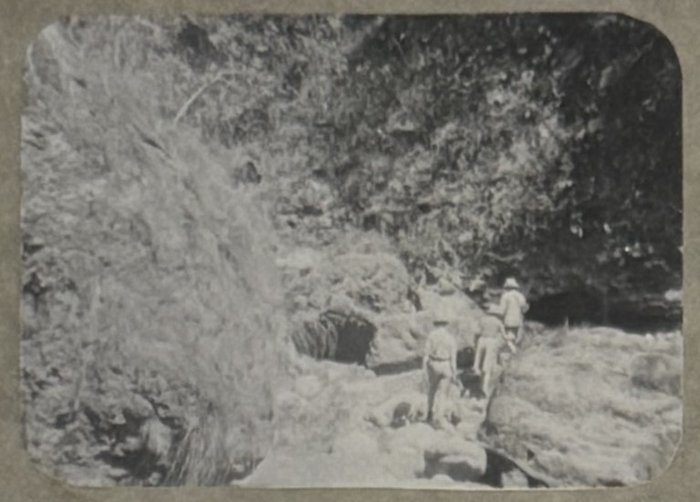
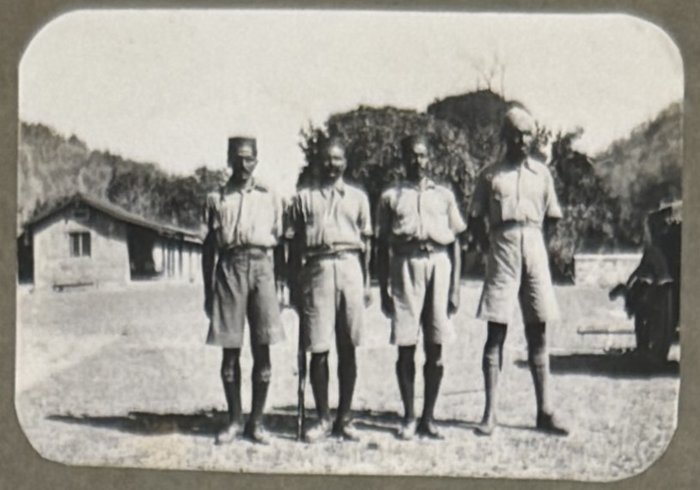
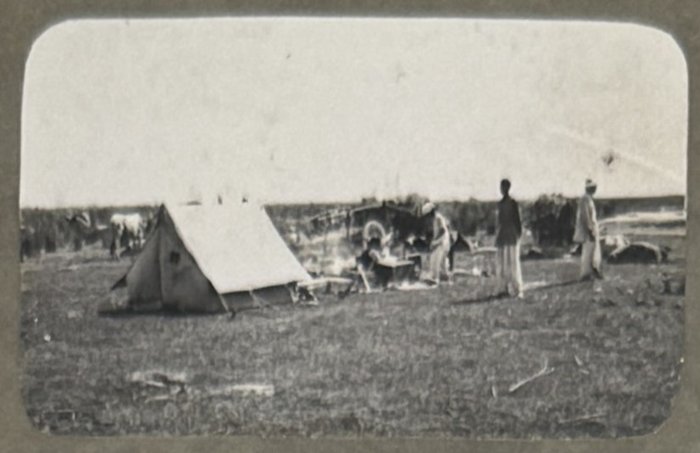
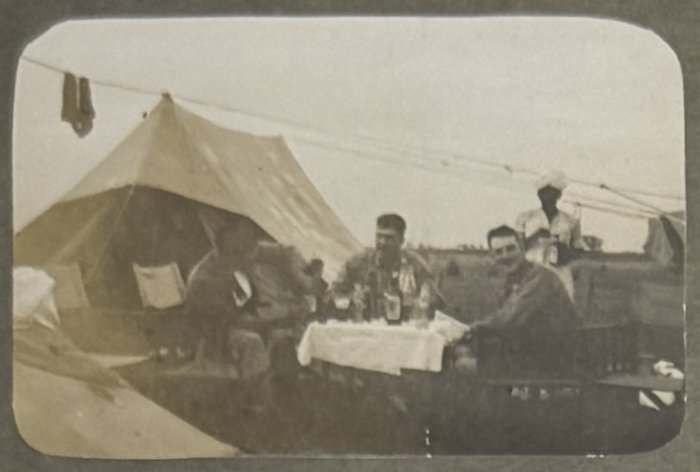
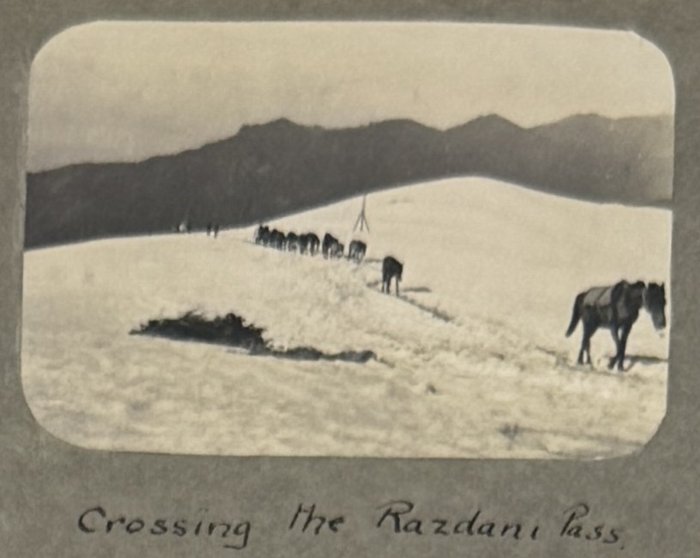
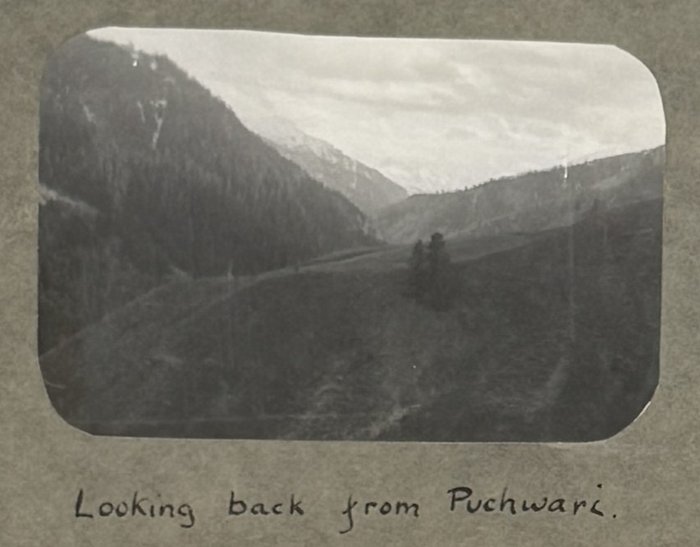
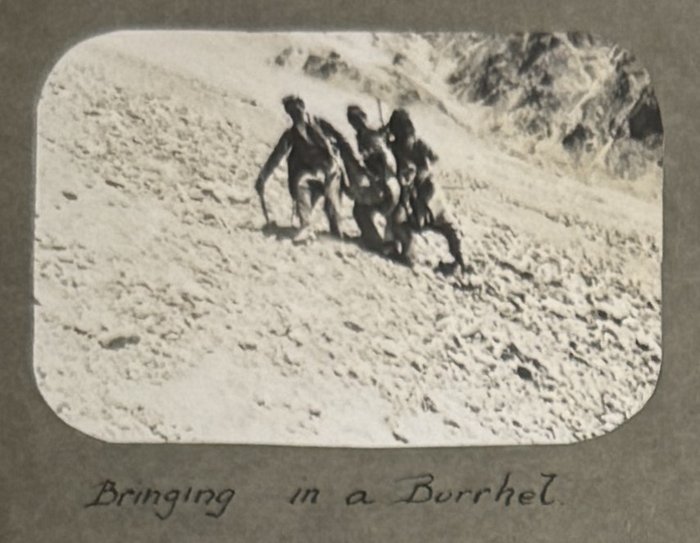
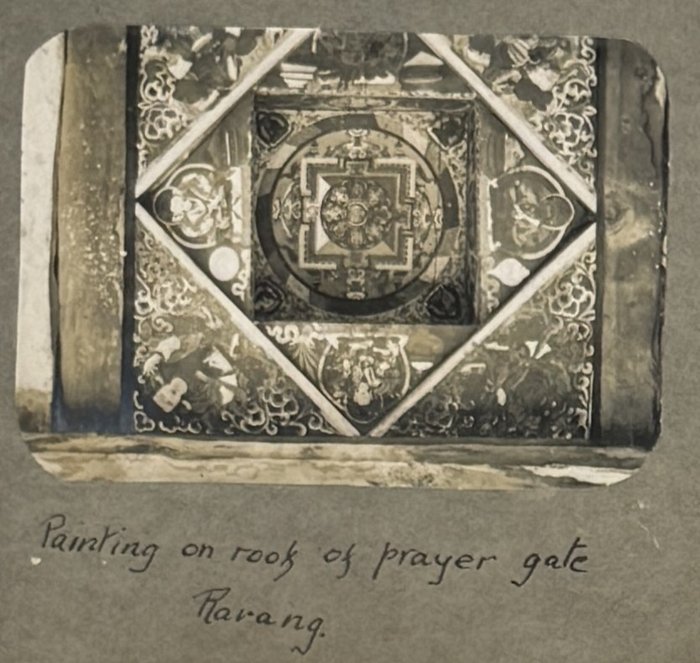
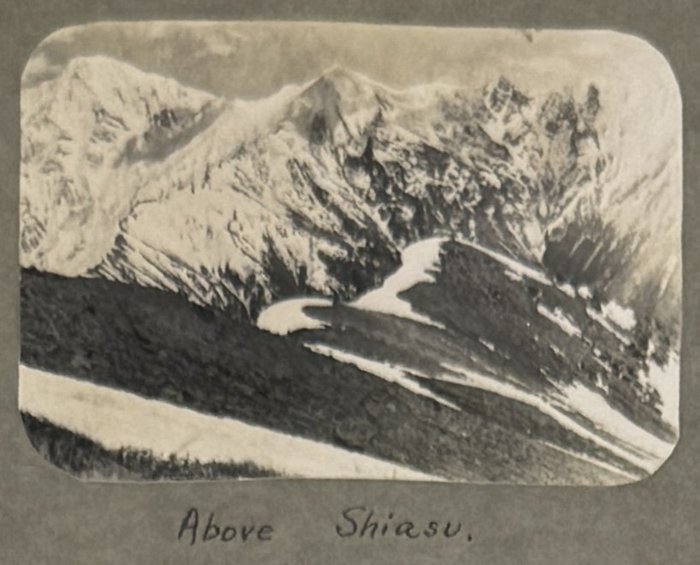

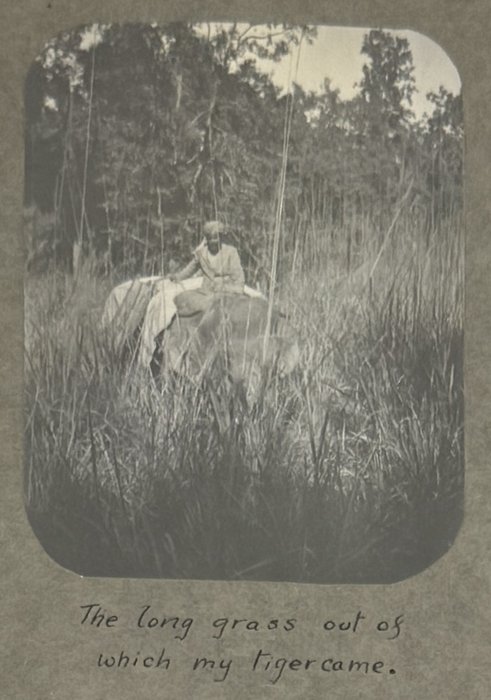
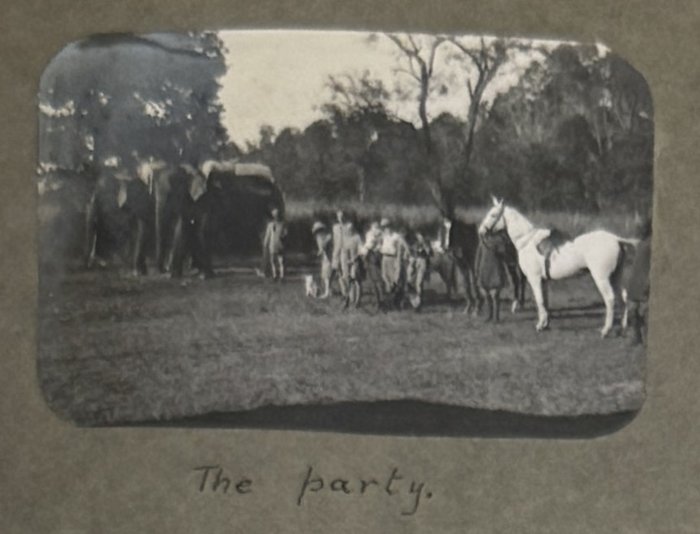
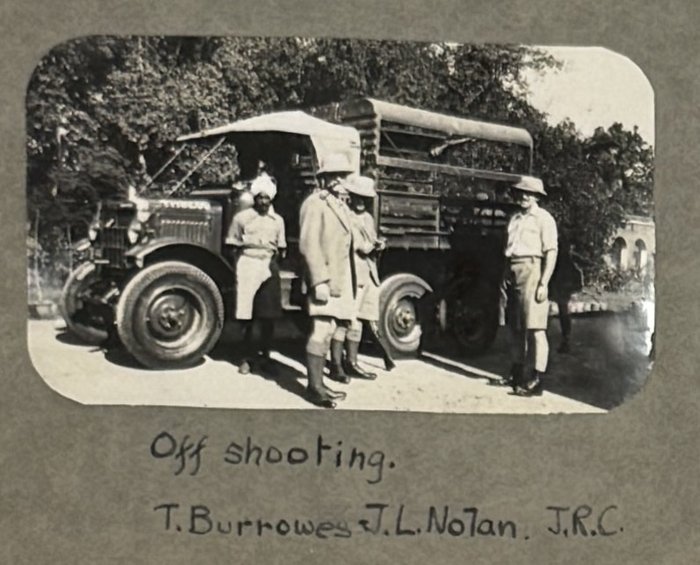
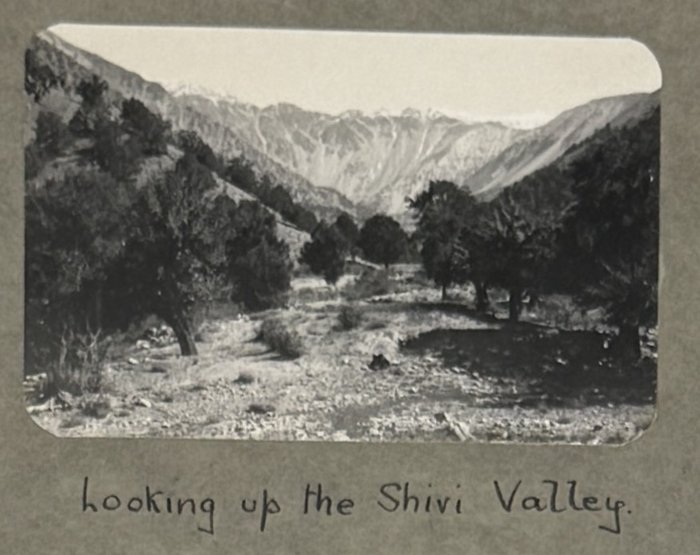
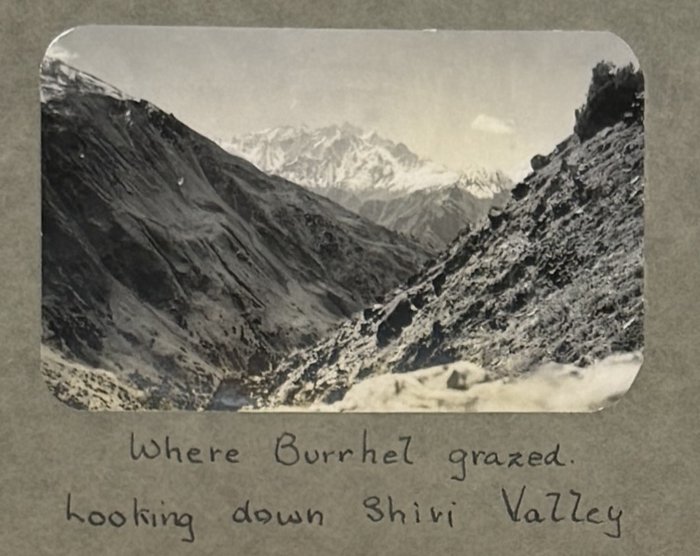

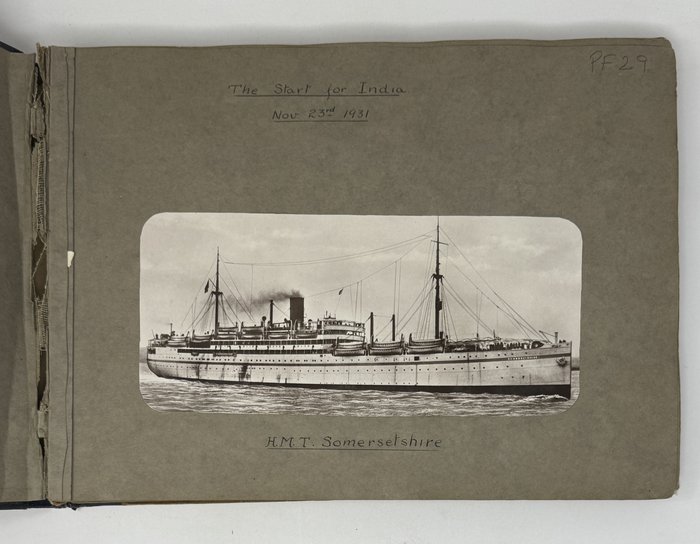

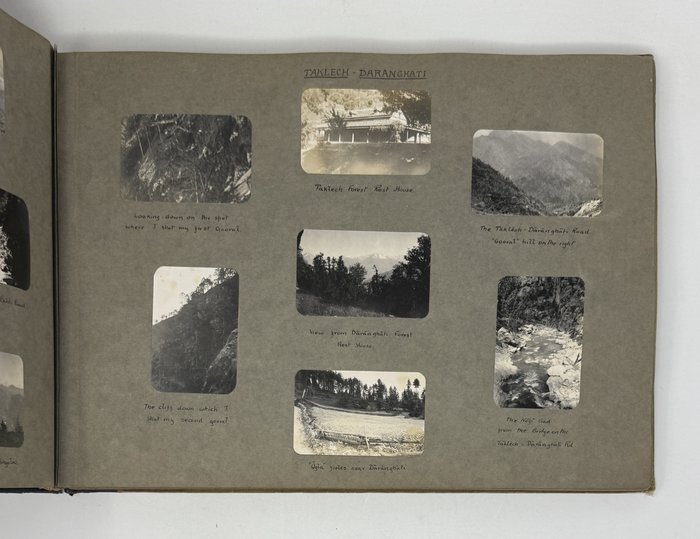
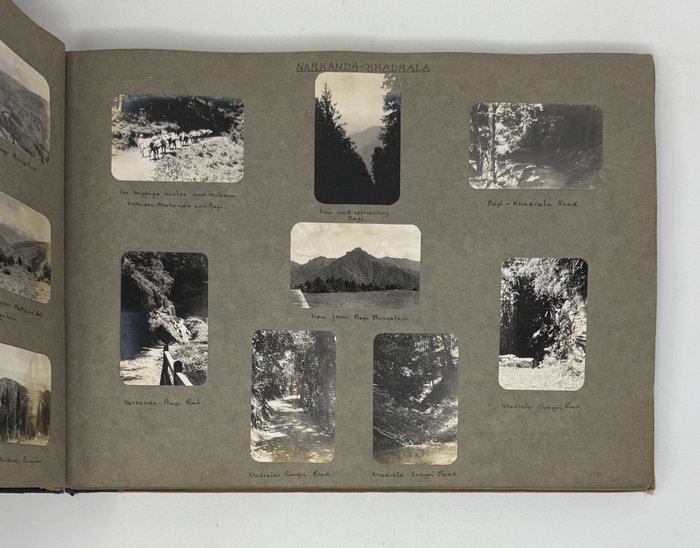
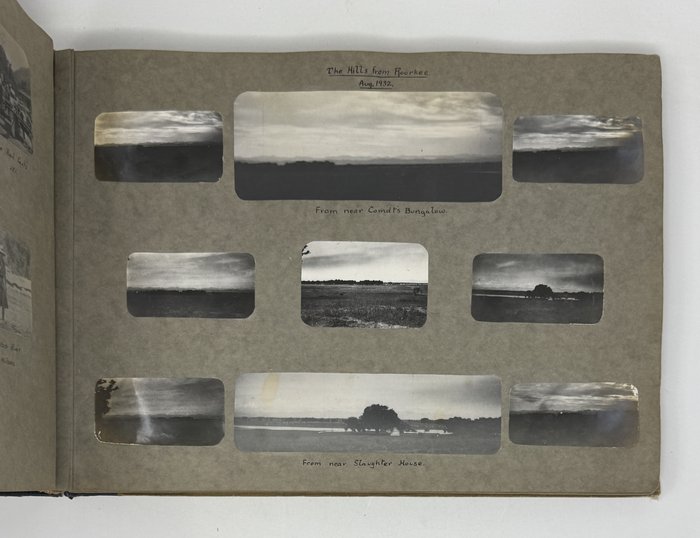
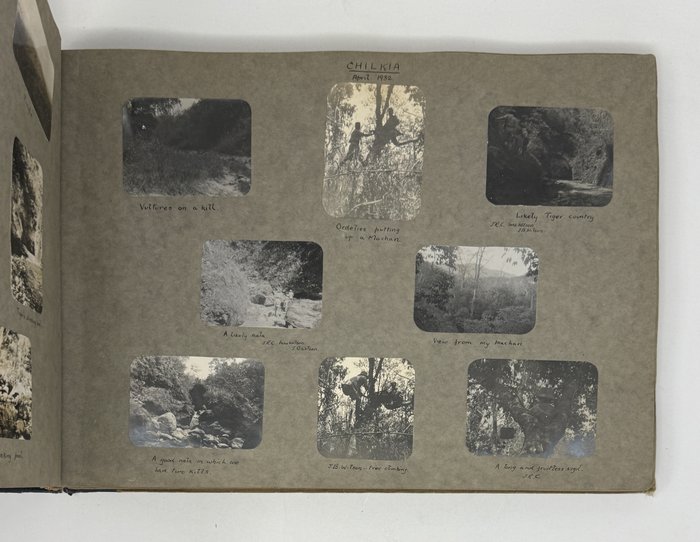
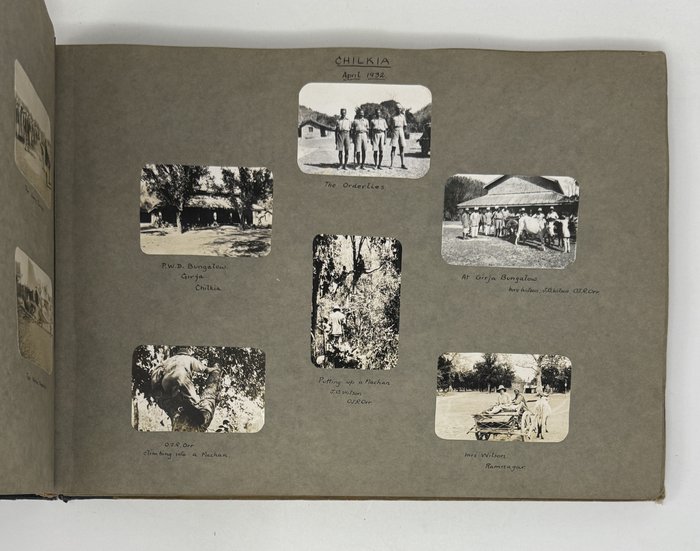
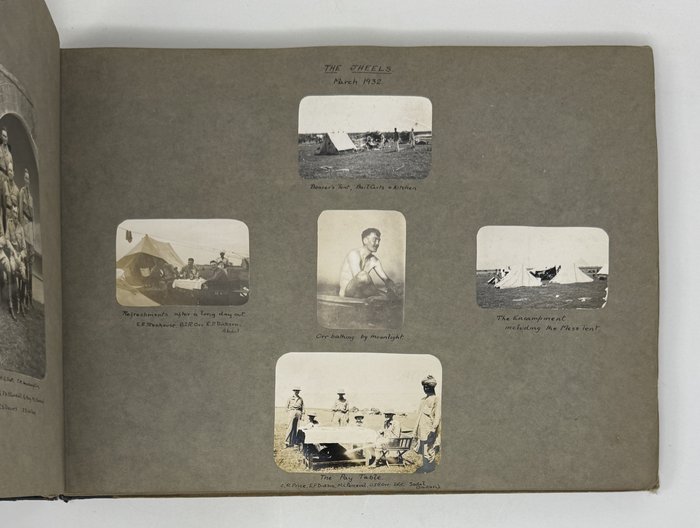
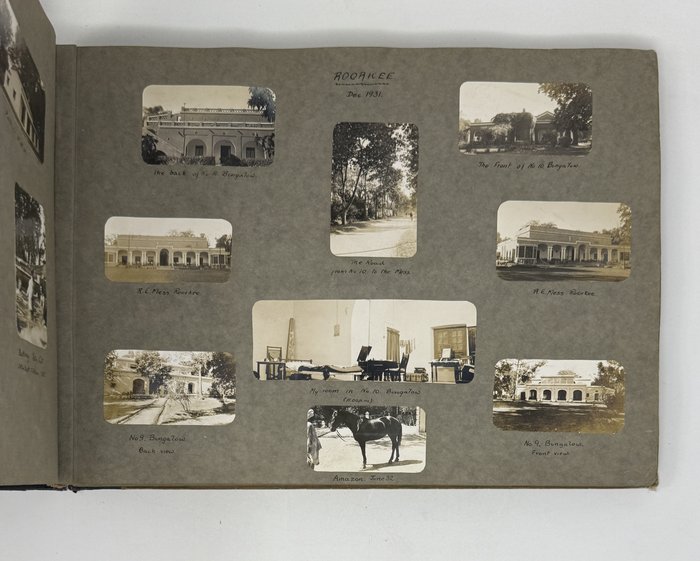
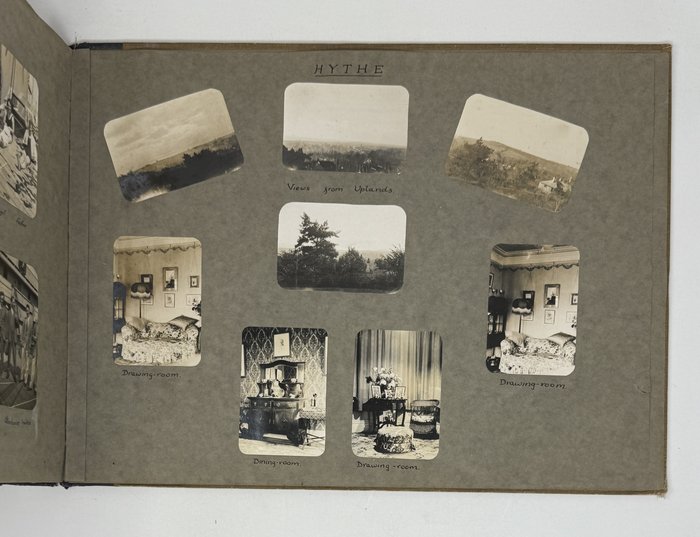
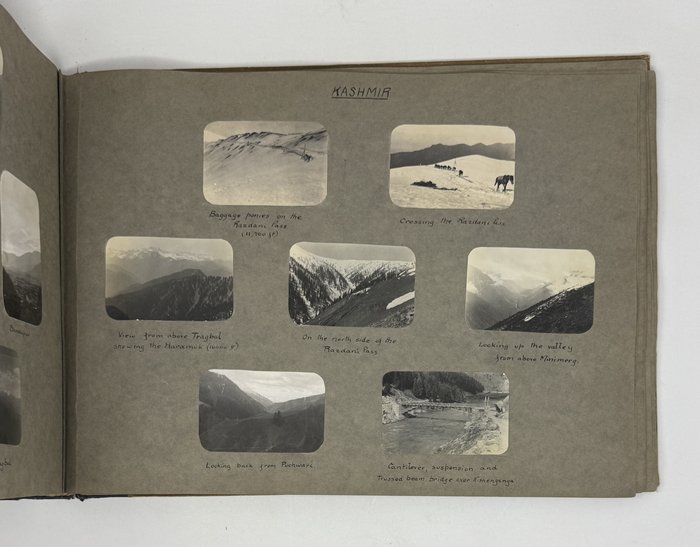
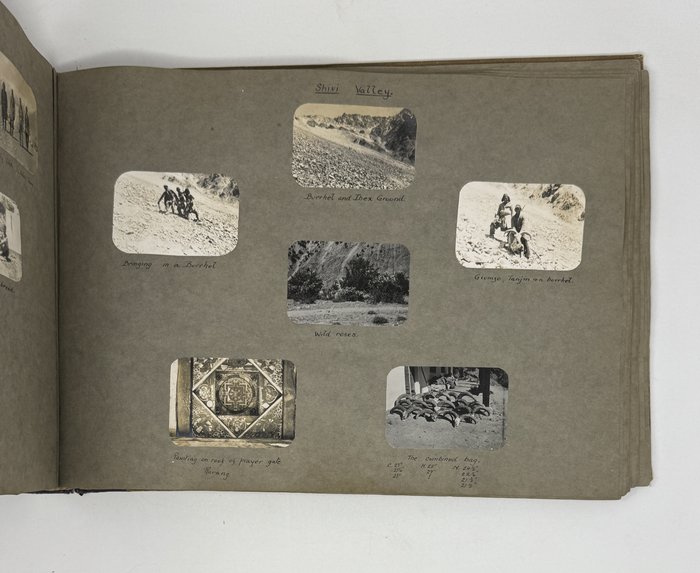
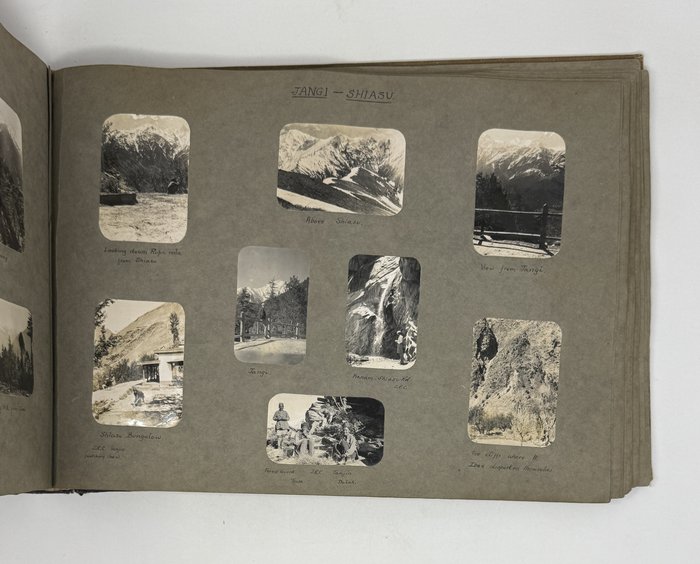
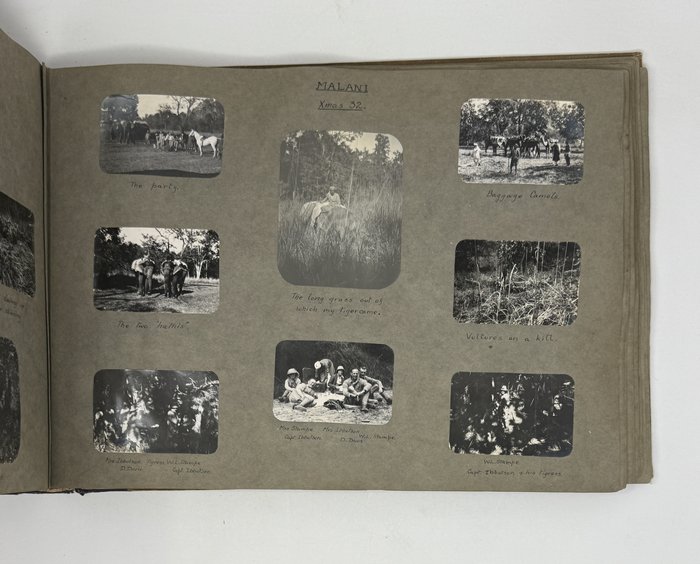
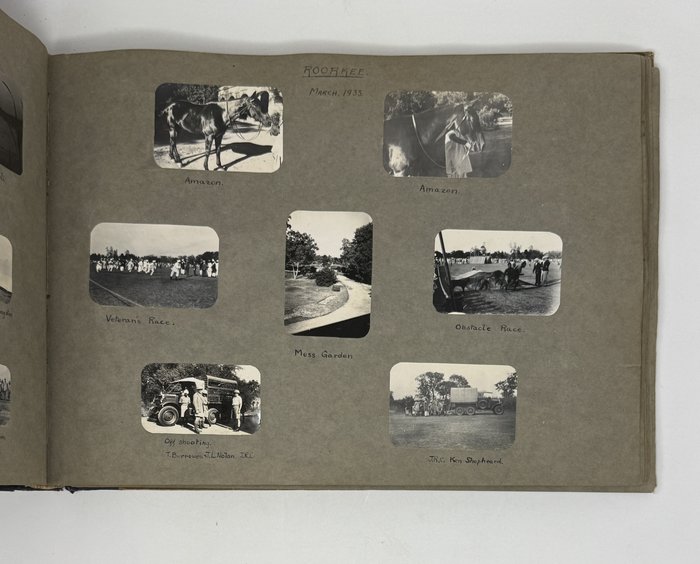
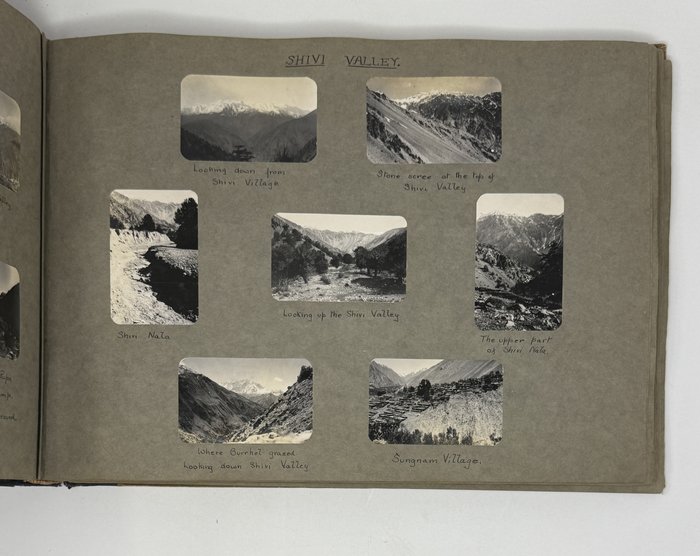
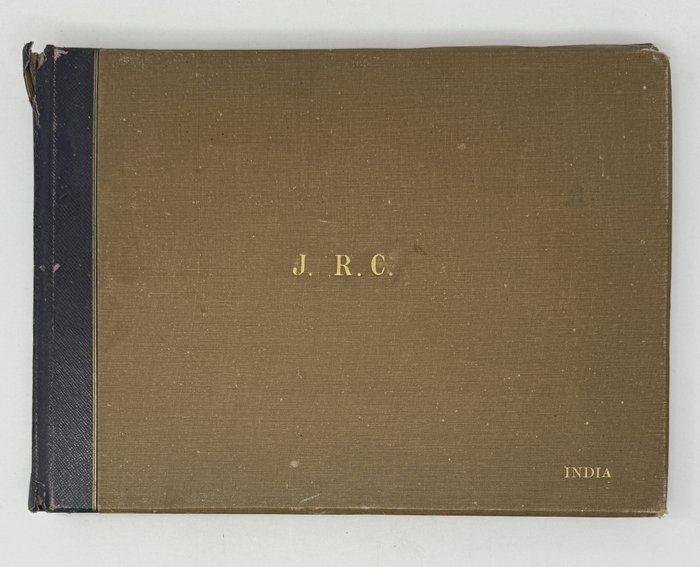
#PF29
Ca. 1931-1935
Oblong Folio album (ca. 27,5x37 cm or 10 ¾ x 14 ½ in). 40 card stock leaves. With ca. 510 original mounted gelatin silver photos, including eight large images from ca. 19,5x28,5 cm (7 ¾ x 11 ¼ in) to ca. 13x19,5 cm (5 x 7 ¾ in); the rest of the photos are from ca. 11,5x16 cm (4 ½ x 6 ¼ in) to ca. 3,5x5 cm (1 ¼ x 2 in). All photos with period ink captions on the mounts (some captions relate to several images). Period brown quarter sheep album with cloth boards. Gilt-lettered initials “J.R.C.” and title “India” on the front board. With a printed program of an amateur theatre show, which lists J.R. Connor as one of the actors, mounted on the rear pastedown endpaper. Spine with tears on top and bottom, corners bumped, front board slightly loosened at the stub, several leaves at the back detached and loosely inserted, several images slightly faded, but overall a very good album.
With a loosely inserted printed farewell address ca. 34,5x21,5 cm (13 ½ x 8 ½ in). Ca. 1942. 1 p. Text printed in gold. A very good copy. With an album of Connor’s family photos. Oblong Folio (ca. 22x31 cm or 8 ¾ x 12 in). Ca. 1930s-1940. With ca. 330 original mounted gelatin silver photos, from ca. 8,5x14 cm (3 ½ x 5 ¼ in) to ca. 4x6,5 cm (1 ¾ x 2 ½ in). Most photos with period white ink captions on the mounts (captions mostly relate to several images). Period black full cloth album. Several images previously removed, several images slightly faded, but overall a very good album.
Historically significant album with an extensive collection of ca. 510 original gelatin silver photos from the private archive of a notable military officer of British India and later Pakistan, Colonel John Richard Connor, who for over a decade served in King George V’s Own Bengal Sappers and Miners in Roorkee (modern-day Bengal Engineer Group of the Indian Army) and later became the founder and first Commandant of a training centre of the Royal Pakistan Engineers in Sialkot (modern-day Pakistan Army Corps of Engineers).
Over fifty images show the Bengal Sappers and Miners’ headquarters, officers and various operations in Roorkee, including two large group portraits of “The Officers K.G.O. Bengal S. & M., Roorkee” in 1932 and 1933 (all names thoroughly recorded, Connor presents on both photos), views of Royal Engineers Mess, “No. 9” and “No. 10 Bungalow,” “my room in No. 10 Bungalow,” the regiment’s camp in “the jheels,” scenes from the “Corps Sports, Mar. 1932” (obstacle and mule races, long jump competitions, &c.), panoramic views of “the Hills from Roorkee, Aug. 1932,” two photos with “the last Corps elephants, demobbed 1932,” &c. Numerous images illustrate tiger hunting and leisure trips of Connor and his fellow officers in “Chilkia, April 1932” and Malani (“Xmas 32,” “Feb. 1933”).
Very interesting are ca. 190 photos of the Hindustan-Tibet Road, taken during two trips in 1932-1933. The images show various rest houses, settlements, road tunnels, bridges, Himalayan hills, peaks, glaciers and valleys, local villagers and mule men, Connor and his travel companions, &c. The images are grouped according to the following route stretches and stops: “The H.-T. Road, Aug. 1932,” “Narkanda – Khadrala,” “Khadrala – Bahli,” “Taklech – Daranghati,” “Sarahan – Wangtu,” “Wangtu – Urni,” “The Chini Cliffs,” “Chini,” “Chini – Jangi,” “Jangi – Shasu,” “Rupa Valley,” “Shivi Valley,” “H.-T. Road, 1933,” “Jangi – Shiasu,” “Poo – Namgea,” “Tashigang,” “Tashigang – Nako,” “Chango,” “Beyond Changar,” “Changarezing,” “Shivi Valley,” &c.
About twenty photos show the construction of bridges in Jehangira and Akora in 1934 (modern-day Khyber Pashtunkhwa, Pakistan), Attock Bridge and “boat bridge & railway bridge, Nowshera.” There are also over fifty photos from Connor’s travel to Kashmir in 1934, showing Jhelum River, Srinagar, mountain valleys, Razdani Pass, Burzil Pass, Rupal Valley, a series of views of Nanga Parbat (the peak, glaciers, slopes, “my tent and the side of a glacier”), portraits of Connor, his guides and local people.
Over twenty photos document road construction near Haryankot (North-West Frontier Province, now Khyber Pashtunkhwa, Pakistan) in October-December 1934: digging and pouring bridge foundations, “building the abutments,” “fixing reinforcements,” “preparing shuttering for 6’ span culvert,” “Haryankot Camp,” “view from my tent,” &c. There are also six interesting images from the “Loe Agra Operations, 1935” – one of the military campaigns of British forces in the North-West Frontier Province. The images show “Kot Camp,” “Barghai from top of Waruki Kandao,” “S. & M. working on mule track,” “2nd/15th Punjabis on the new mule track,” &c. The “Indian” part of the album closes with five large excellent photos, taken on the “H[industan]. T[ibet]. Road,” showing “Nanga Parbat, 1934,” “View from Narkanda Bungalow,” two stunning panoramas of the Himalayan ridges and “mules and driver on H.T. Road.”
The album also contains over thirty snapshot photos, taken during Connor’s voyage to India in November 1931 (H.M.T. “Somersetshire,” scenes on board and other British military men, views of Malta, Suez Canal, and Aden), and several images from one of the trips back to England (Port Said, scenes on board a ship). Ca. 26 photos at the rear show England during Connor’s leave in 1932: the town of Hythe (“views from Uplands, drawing room,” portraits of Connor, his parents, sister and friends), “Uplands” estate, King's College, Emmanuel College, &c. The rear pastedown endpaper of the album has a mounted program of a performance of “The Fourth Wall by A.A. Milne,” which lists “J.R. Connor” playing “Sergt. Mallet.”
The gold-printed farewell address was presented to Connor by one “Subedar Mela Ram and Clerical Staff, Orderly Room, K.G.V.’s O. Bengal S. & M. Group, I.E.” on his departure from service as S.O.R.E. (Staff Officer, Royal Engineers), and is dated “Roorkee, 15th Aug. 1942.”
The family album is mostly dedicated to the early years of Connor’s niece Elizabeth Ruth Fisher (1938-1955) in England and contains the portraits of the family of Connor’s sister Hazel Evelyn Connor (1907-2002): husband William Hugh Trueman Fisher OBE (1905-1987), daughters Ruth and Annette (1940-?), parents and other relatives, nannies, residences in England (Hythe, “Waterside,” Wexham, “Spicers,” Bourne End, Faringdon, &c.).
Overall an interesting extensive collection of original snapshot photos of the Bengal Sappers’ compound in Roorkee, Hindustan-Tibet Road and the North-West Frontier Province of British India in the 1930s.
“John Richard (Dick) Connor <…> was educated at Harrow School (1922-7), the RMA Woolwich (1927-8) and Emmanuel College, Cambridge (1929-31). He was commissioned into the Corps of Royal Engineers on 30 August 1928, a member of 20 YO Batch, and his first posting, in 1931, was to India, where he joined the KGV’s Own Bengal Sappers and Miners, at Roorkee. He continued to serve with that Corps until 1942, mostly in Roorkee, but with interludes on active service on the North-West Frontier in the Loe Agra operations of 1935 and in the Waziristan operations of 1936-7. His long service in Roorkee, which he loved dearly, gave him the opportunities, which he took so enthusiastically, to become an expert big and small game shot and fisherman. <…>
In 1942 he attended the 6th War Course at the Quetta Staff College and, after a short spell at SORE II G (Trf) North-Western Army, India, he was appointed CRE 15 Indian Corps Troops Engineers and saw active service in the Arakan, where he was mentioned in despatches and was awarded the Burma Star and the OBE (1945). Later in 1945 he returned to Roorkee to become Assistant Commandant (Training), and in 1947 he became the last Commandant of the Bengal Group of the Royal Indian Engineers before “Partition.”
When Connor first joined the Bengal Sappers and Miners in 1931 their role was primarily for employment in mountain frontier warfare and they were equipped for the most part with had tools and horse and pack-mule transport. There was even an elephant on their establishment, possibly the last elephant of the Indian Army. During his long service with that Corps a great transformation took place, and Connor personally played a very considerable part in the conversion of the Corps to a role in keeping with employment in a World War completely equipped with modern mechanized transport, power tools and highly technical engineer equipments and, when hostilities broke out, the enormous expansion of that magnificent Corps which served with such distinction in the Middle East and Burma.
He understood, appreciated and admired the Punjabi Musselmen, Hindus, Sikhs and Pathans, who formed the Bengal Sappers and Miners and they loved and greatly respected him.
When independence came to India in 1947, he was selected to take those Bengal Sappers who were destined for Pakistan from Roorkee to Sialkot, where he set up the new Training Centre of the Royal Pakistan Engineers and became their first Commandant. He remained in that appointment, with short periods with the E-in-C Pakistan and as Director, Pakistan Engineers, until 1958, when he retired. He was created CBE in 1954. <…> On retirement, he settled in Melrose, where he spent much of his time adding to his already considerable reputation as a fisherman and taking a heavy toll of the salmon in the Tweed and other Scottish rivers” (Memoirs: Colonel J.R. Connor, CBE// The Royal Engineers Journal. Vol. LXXXIV, June 1970, No. 2, p. 167).

